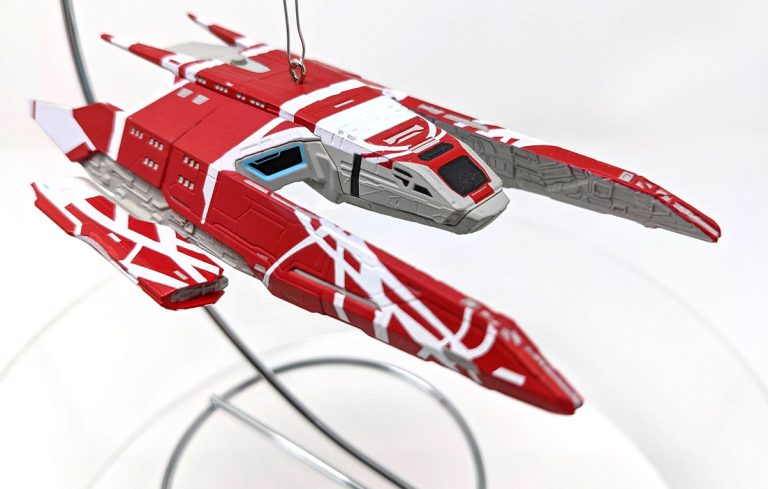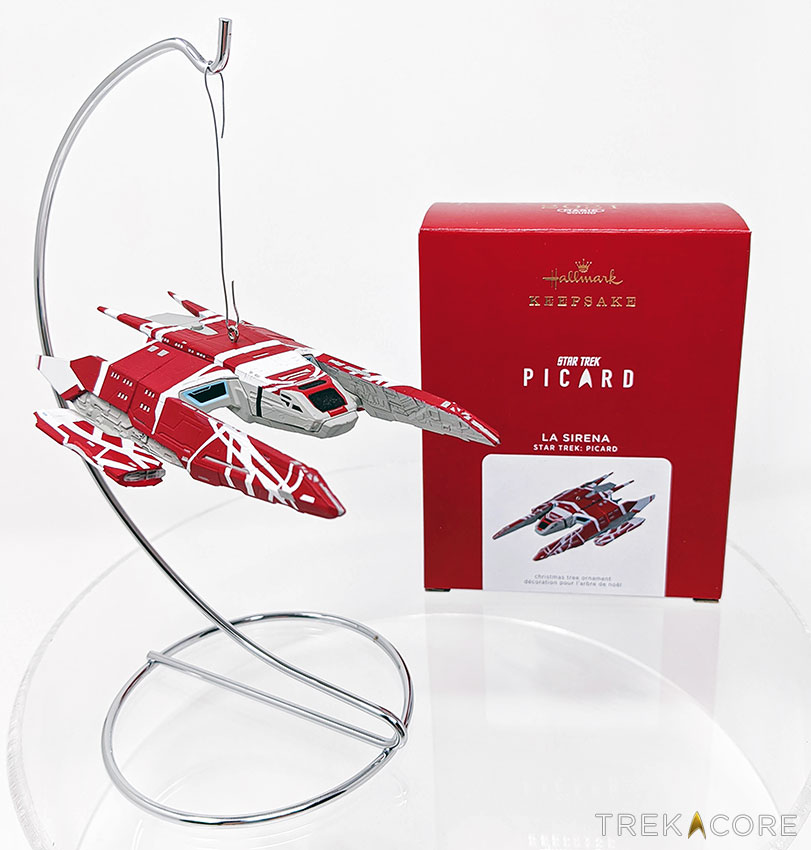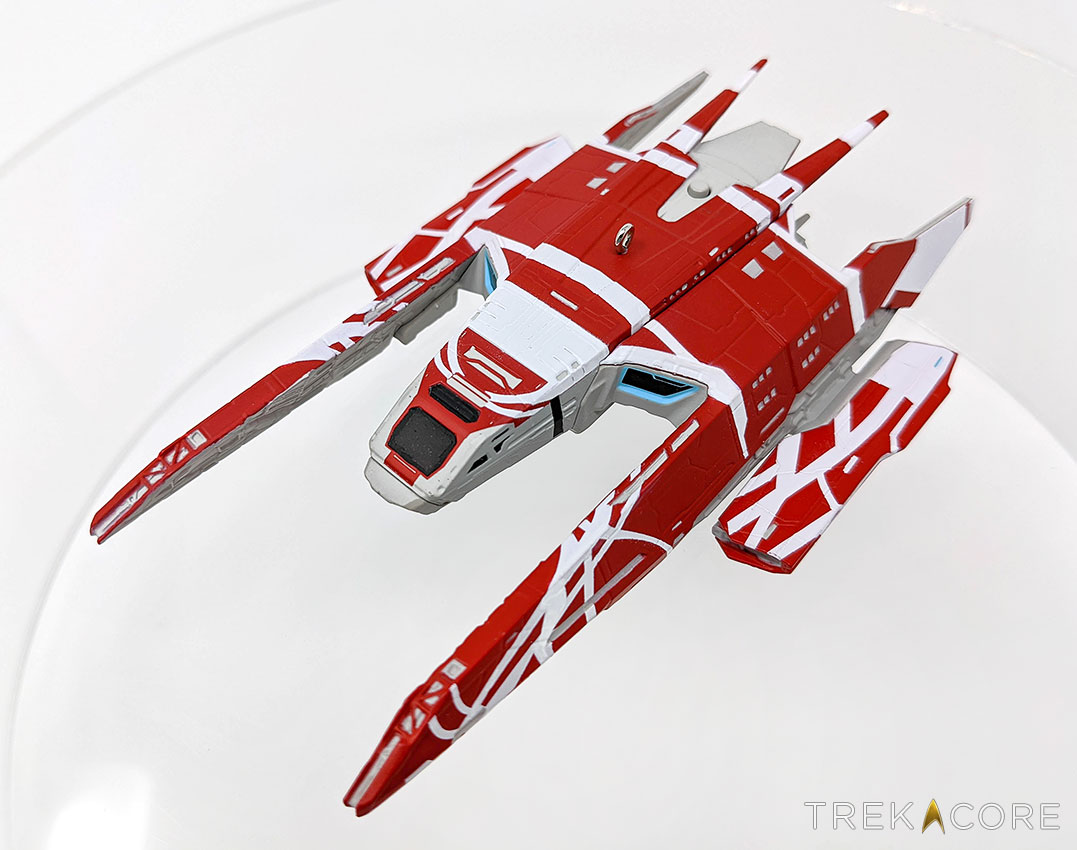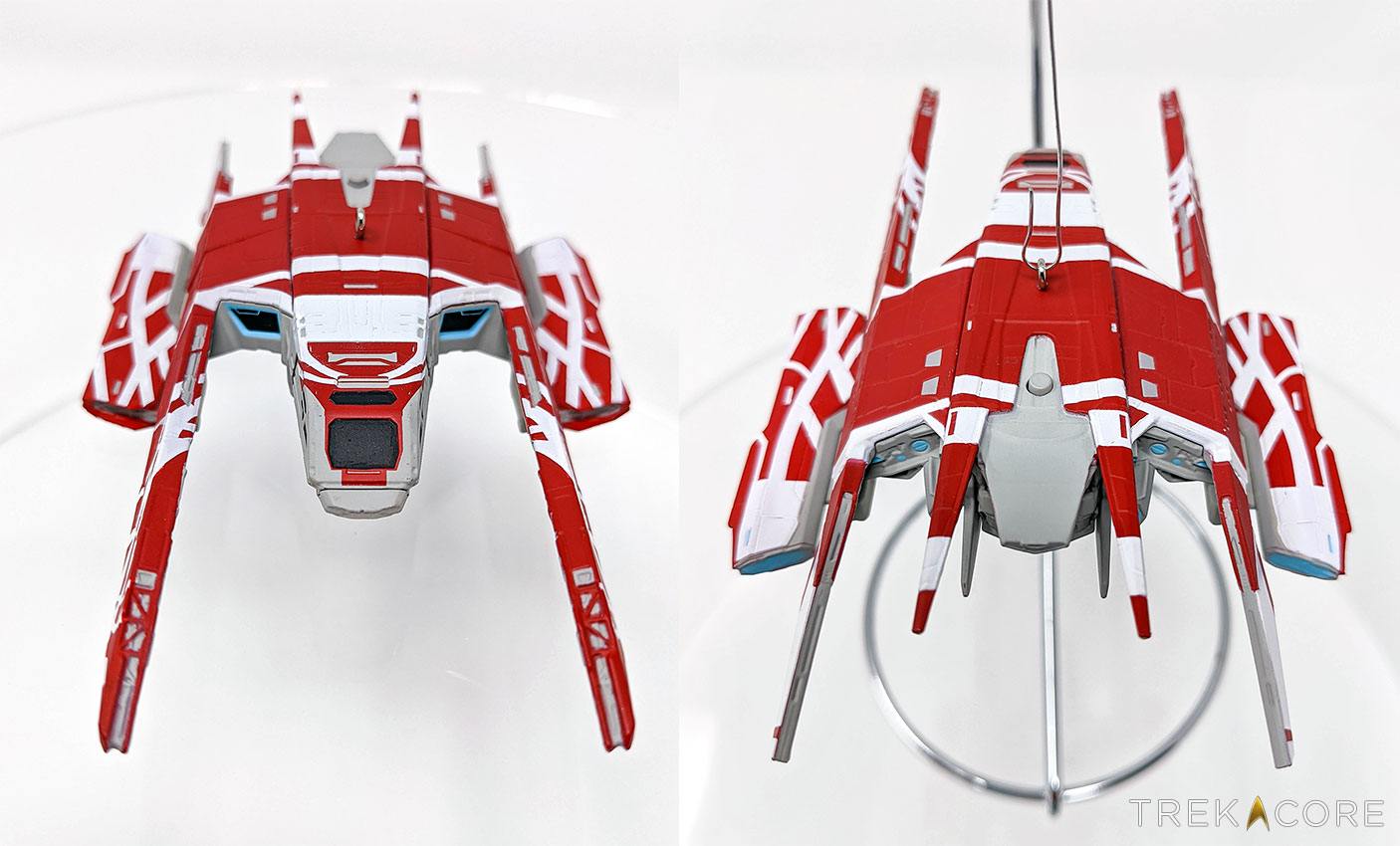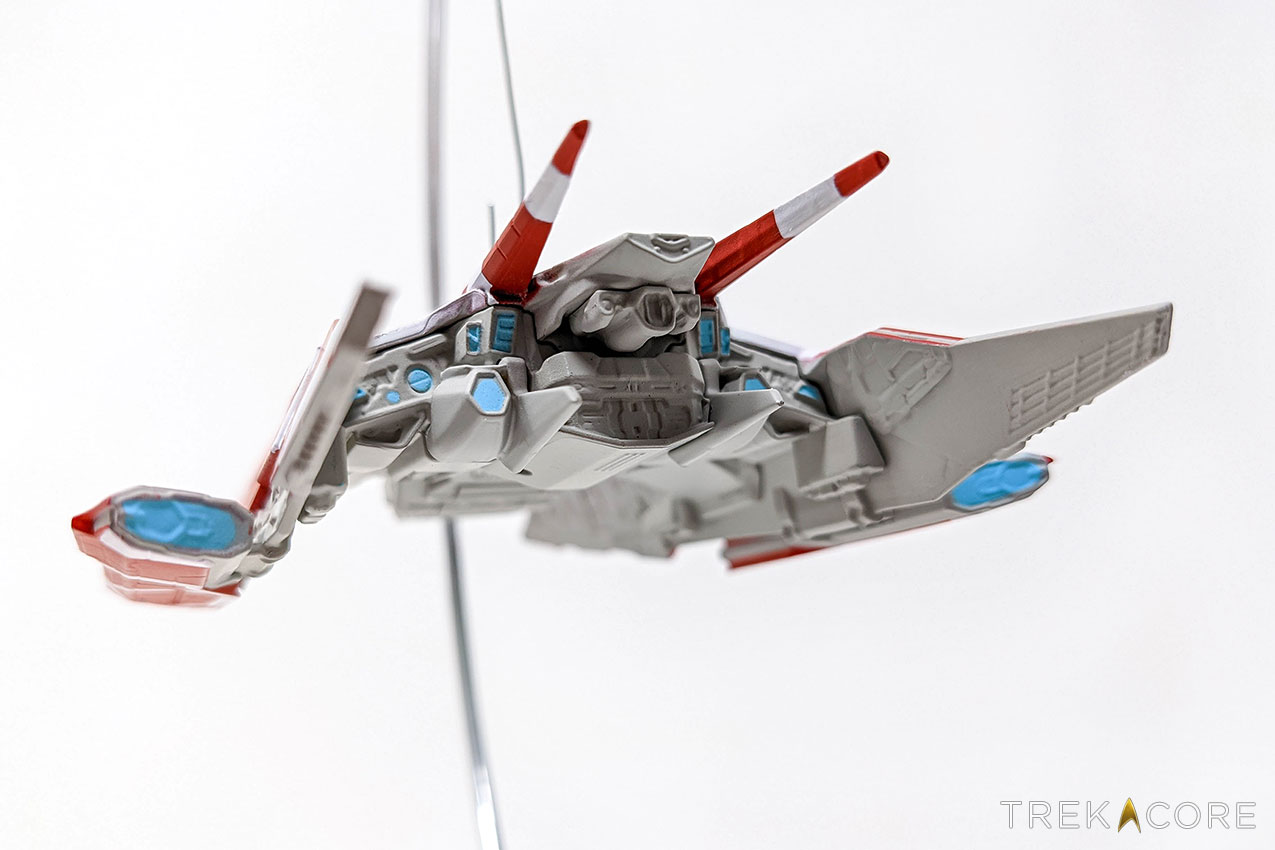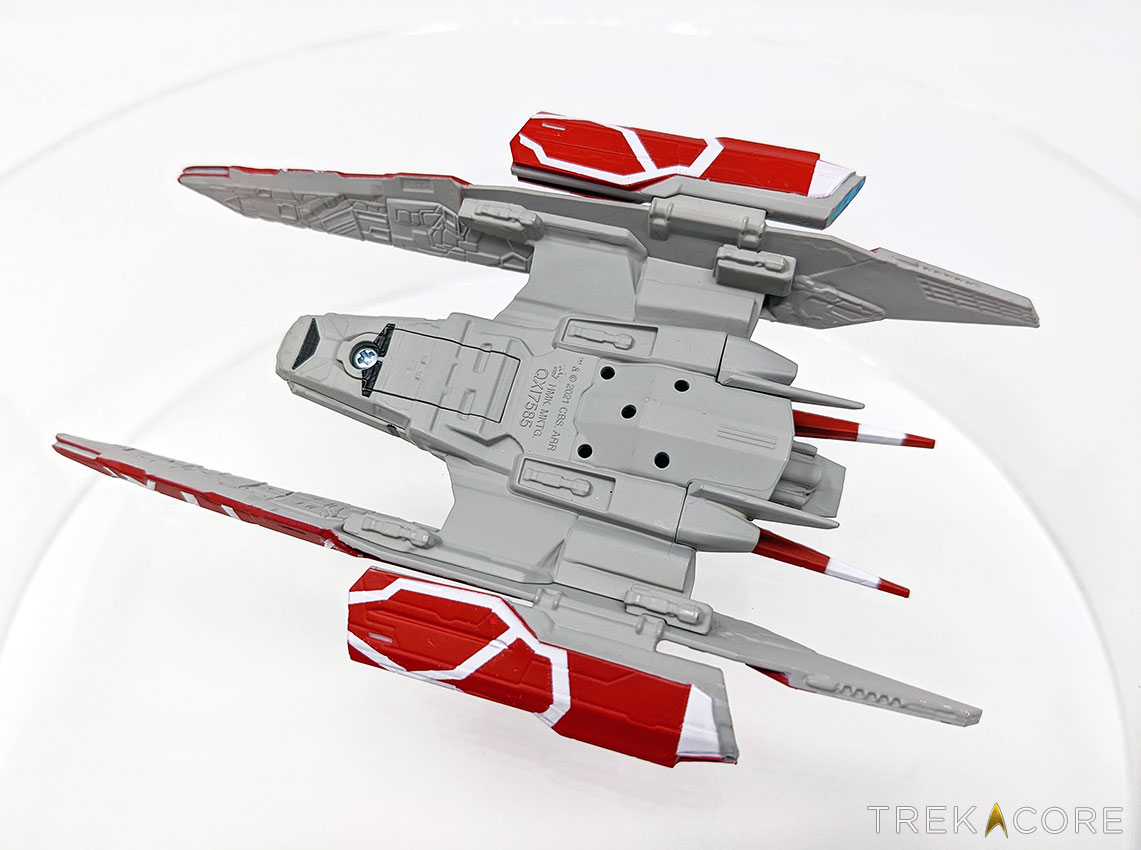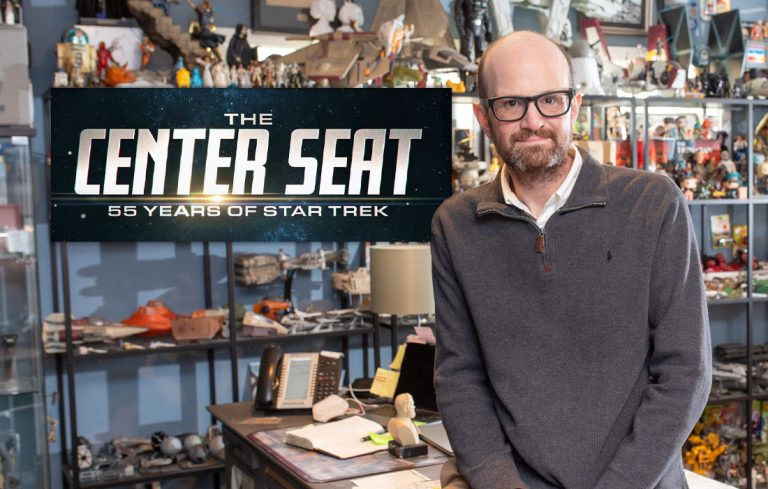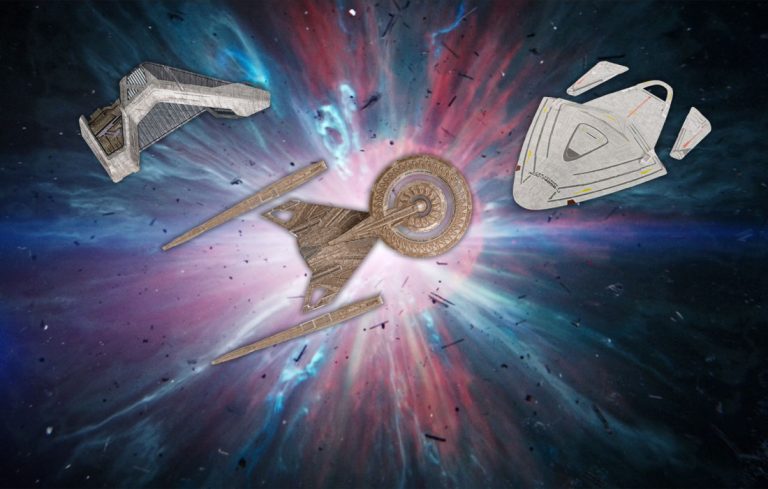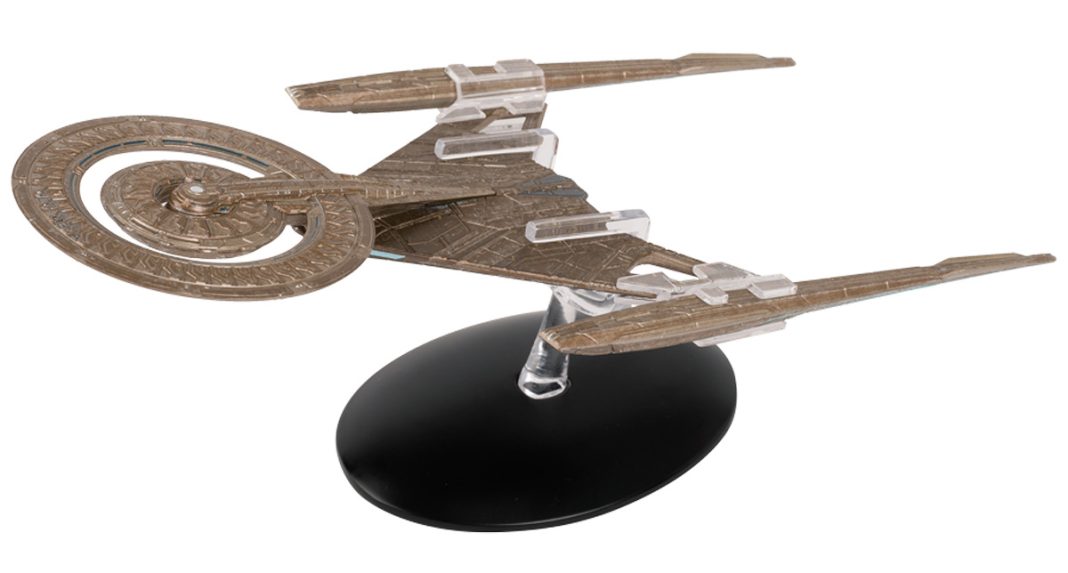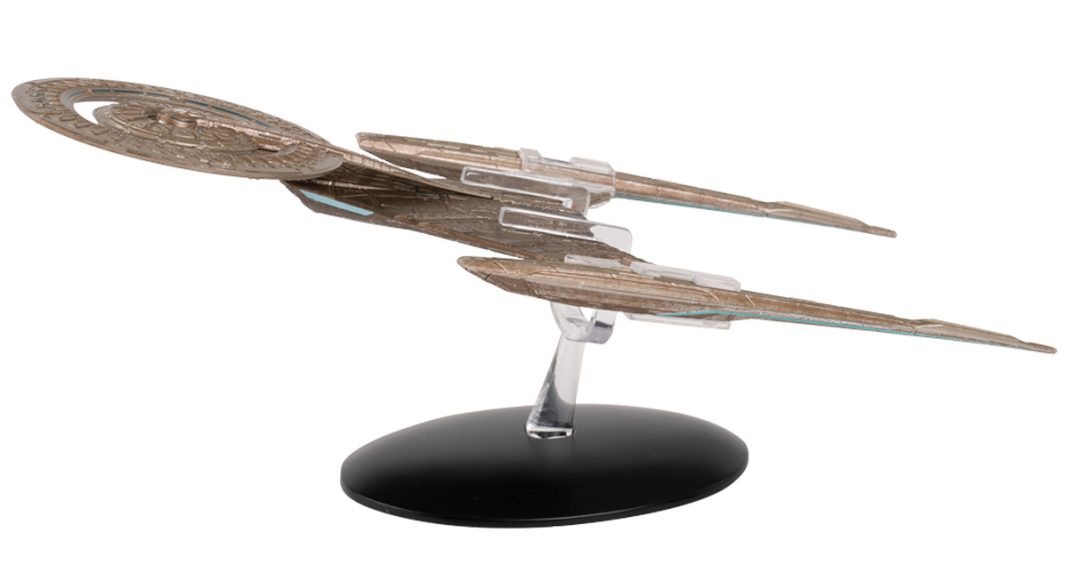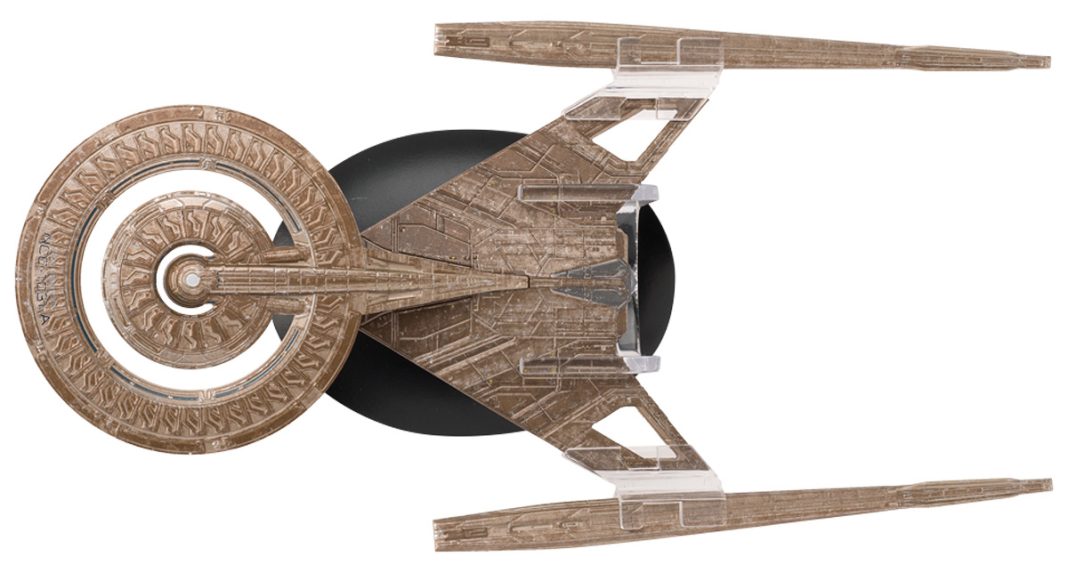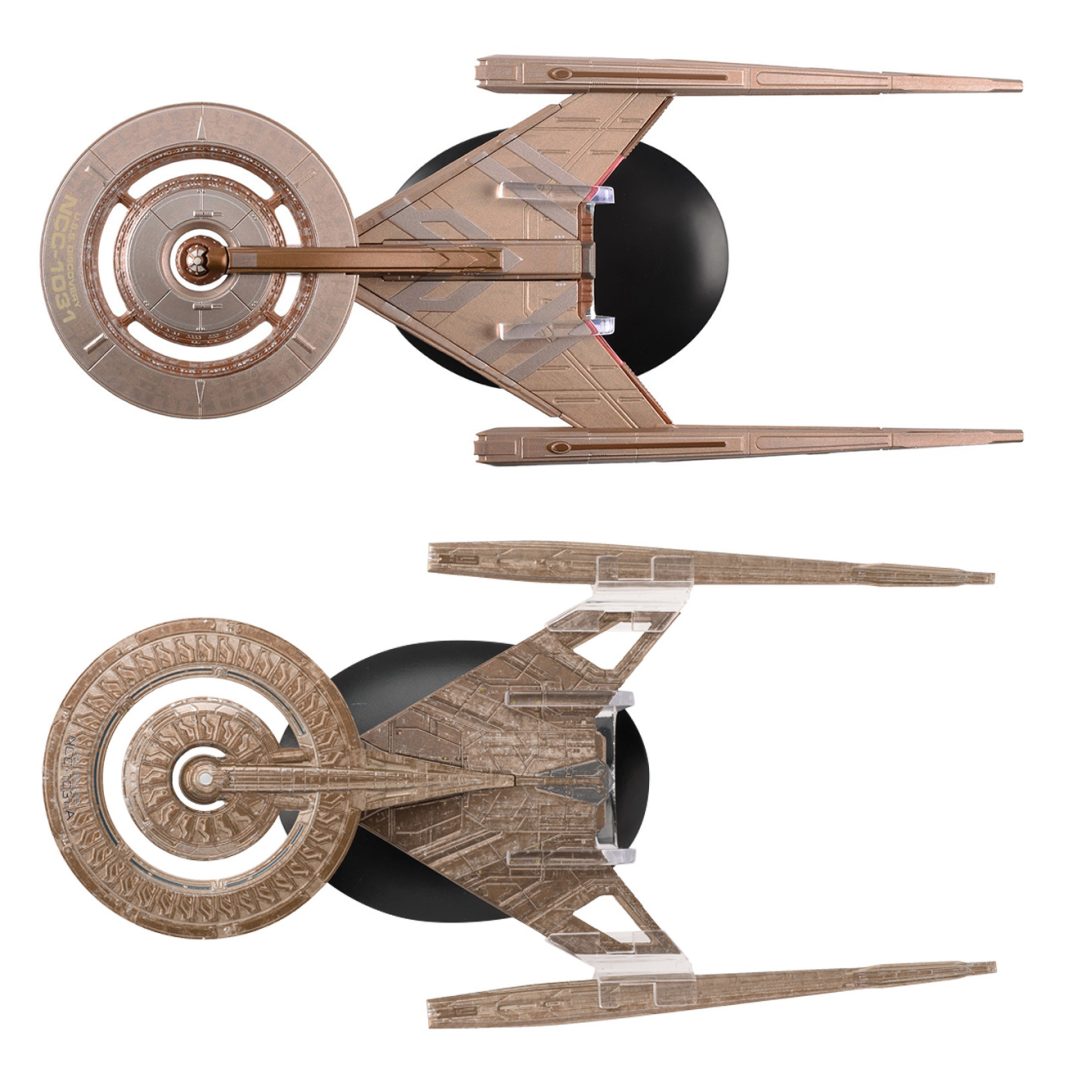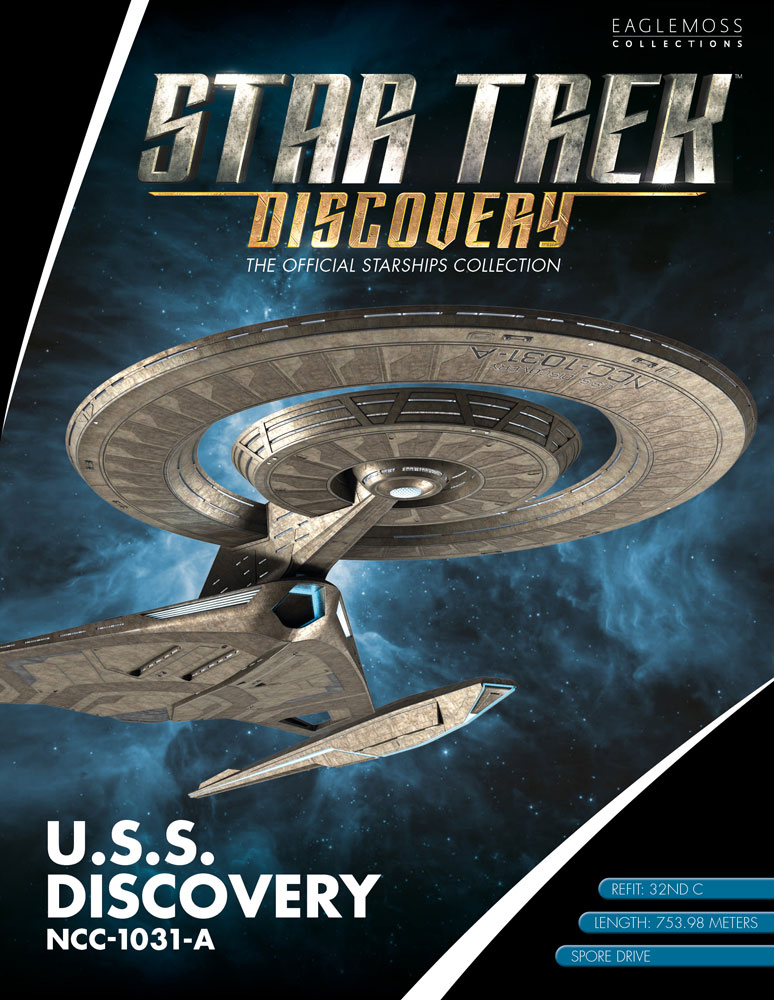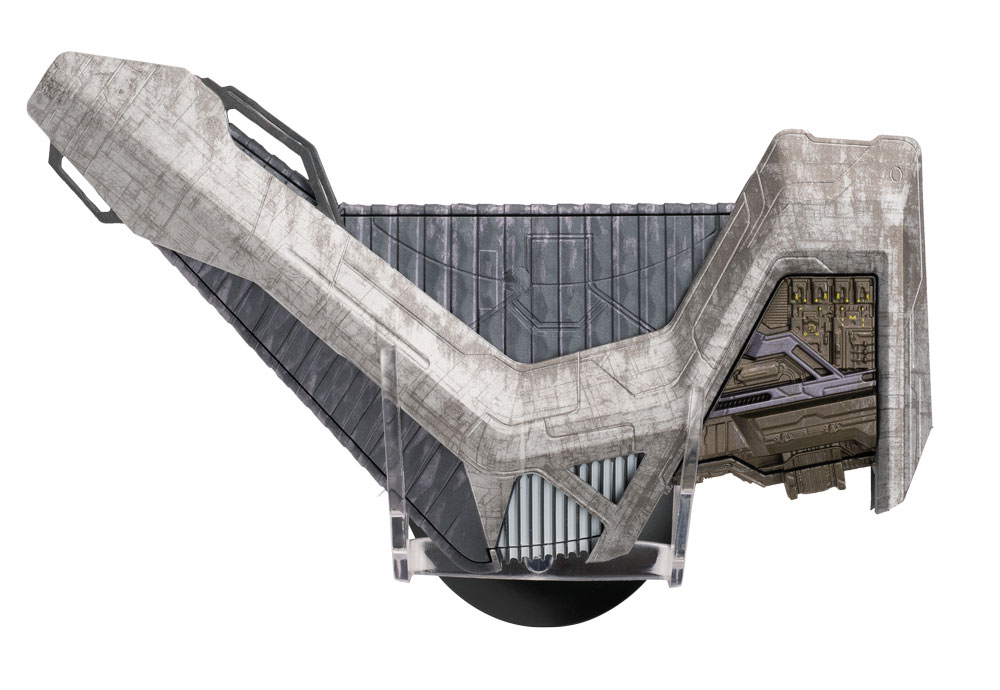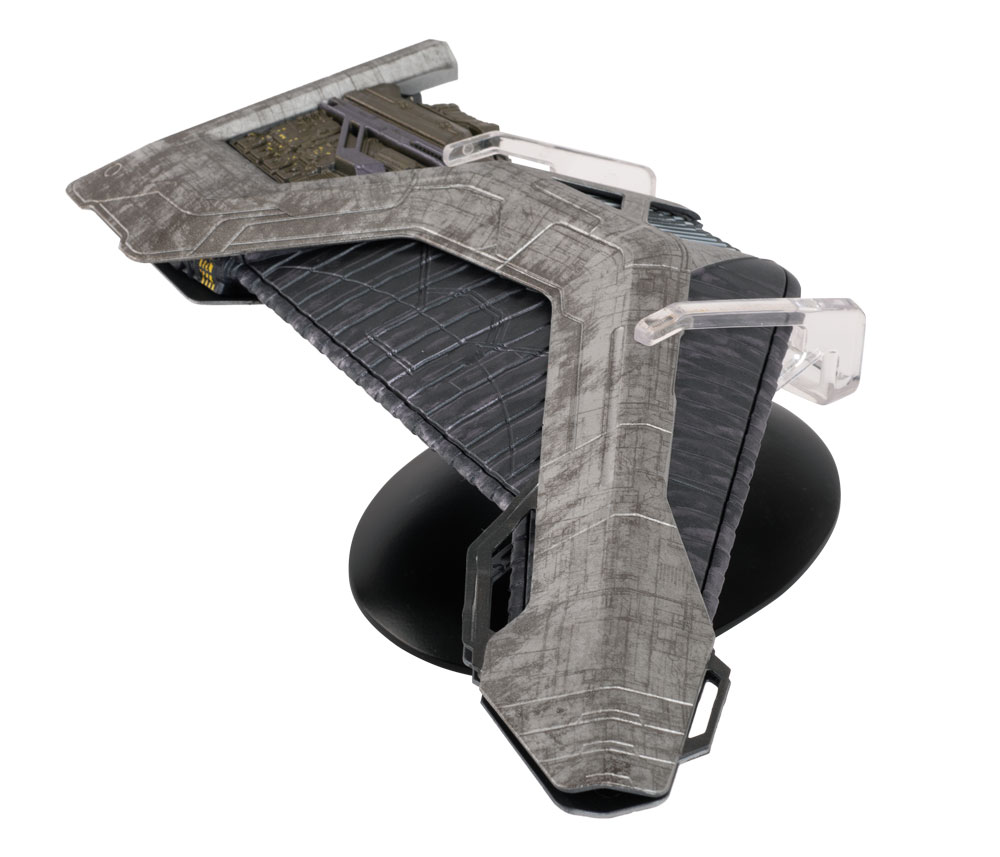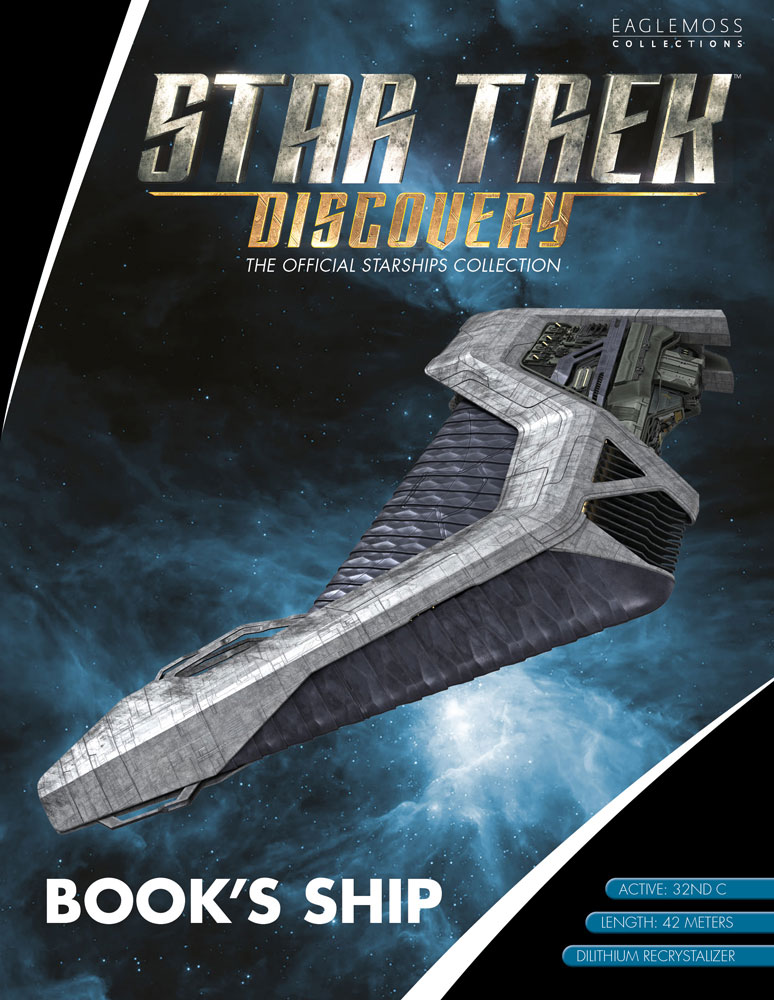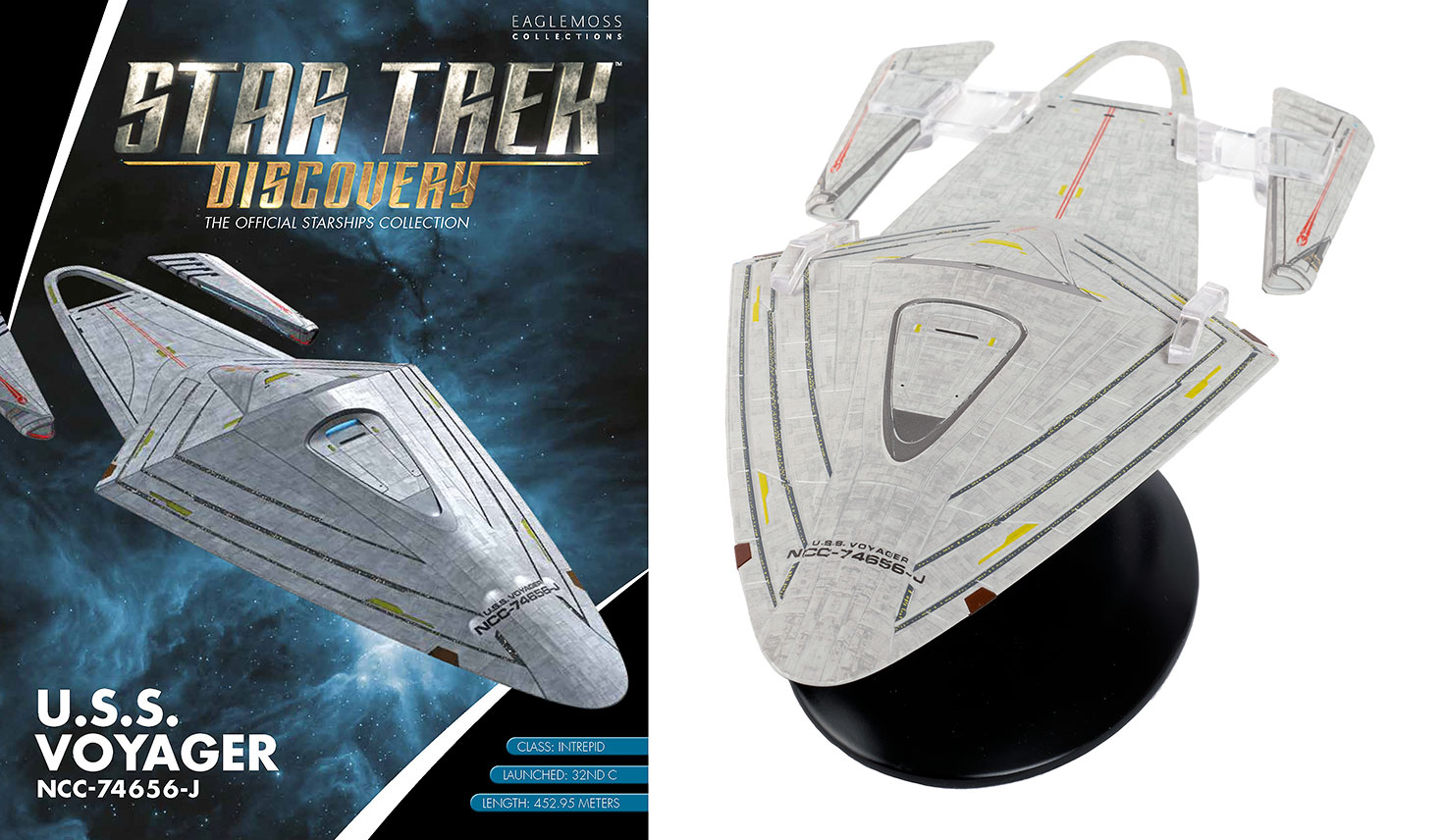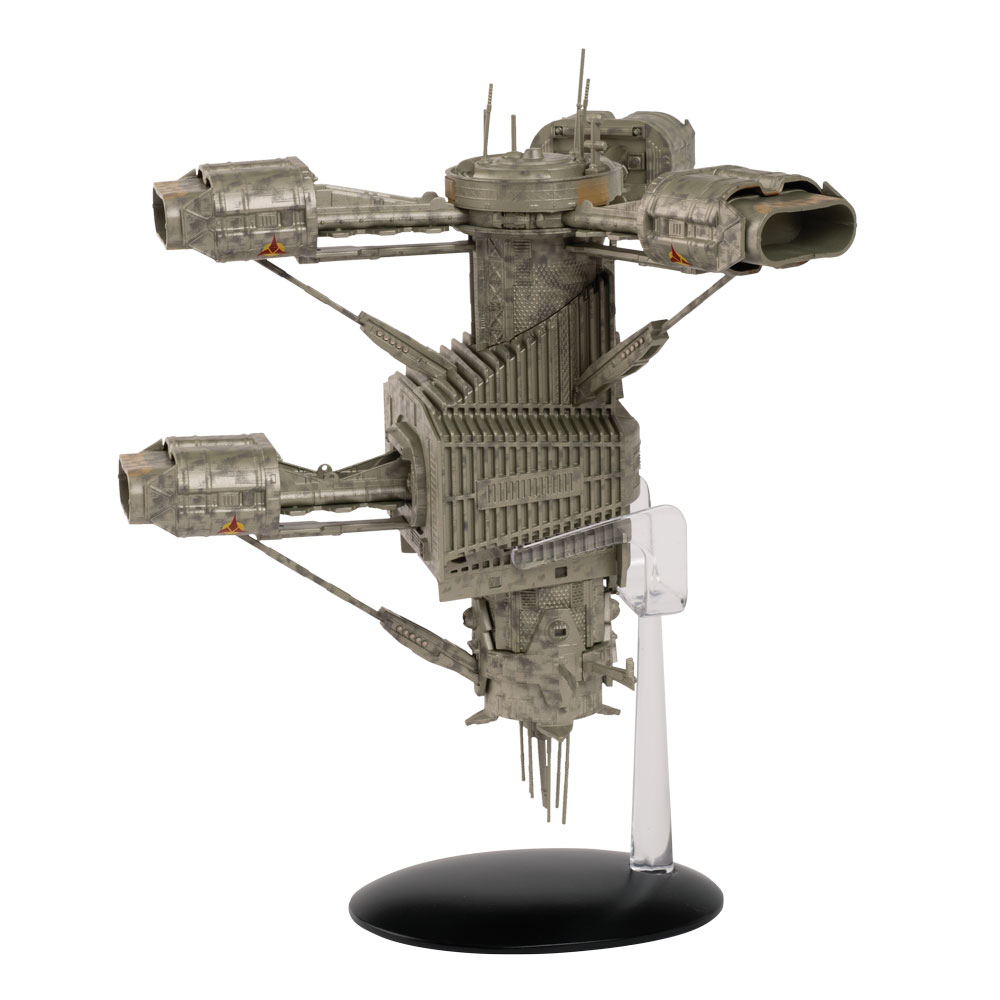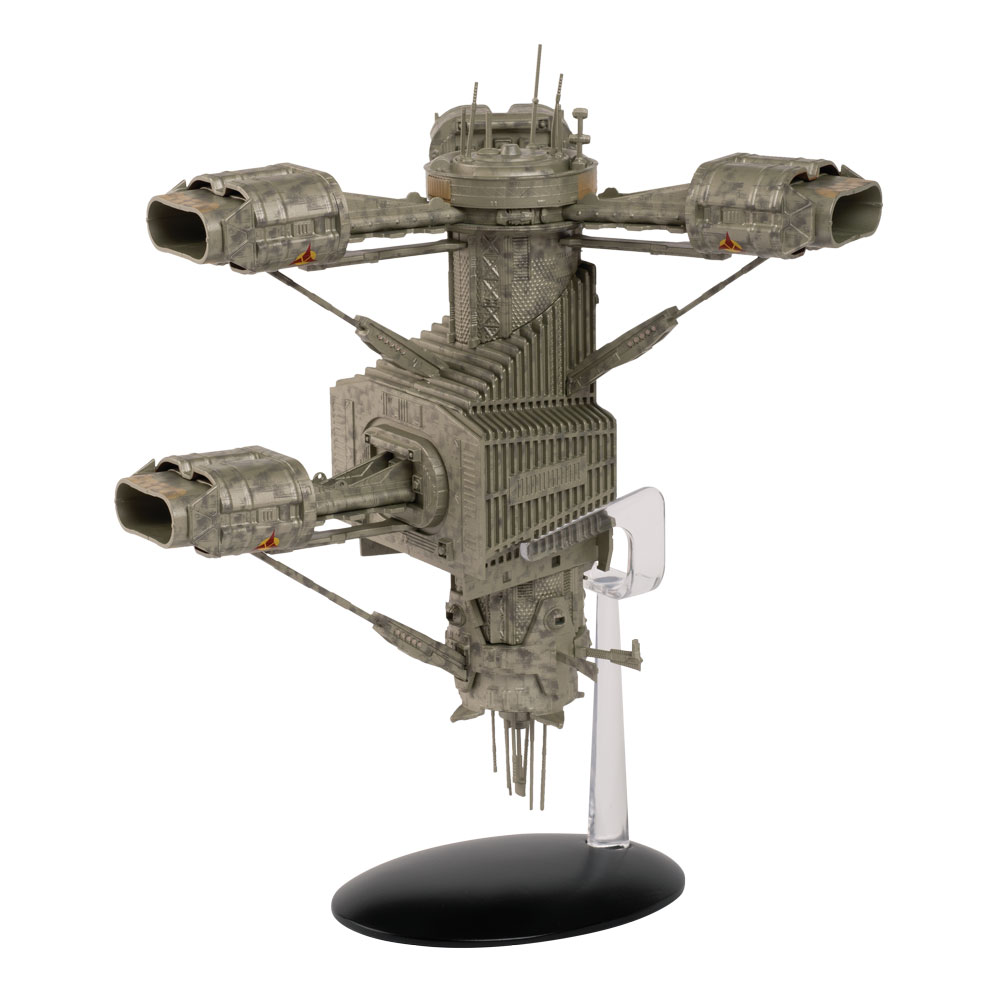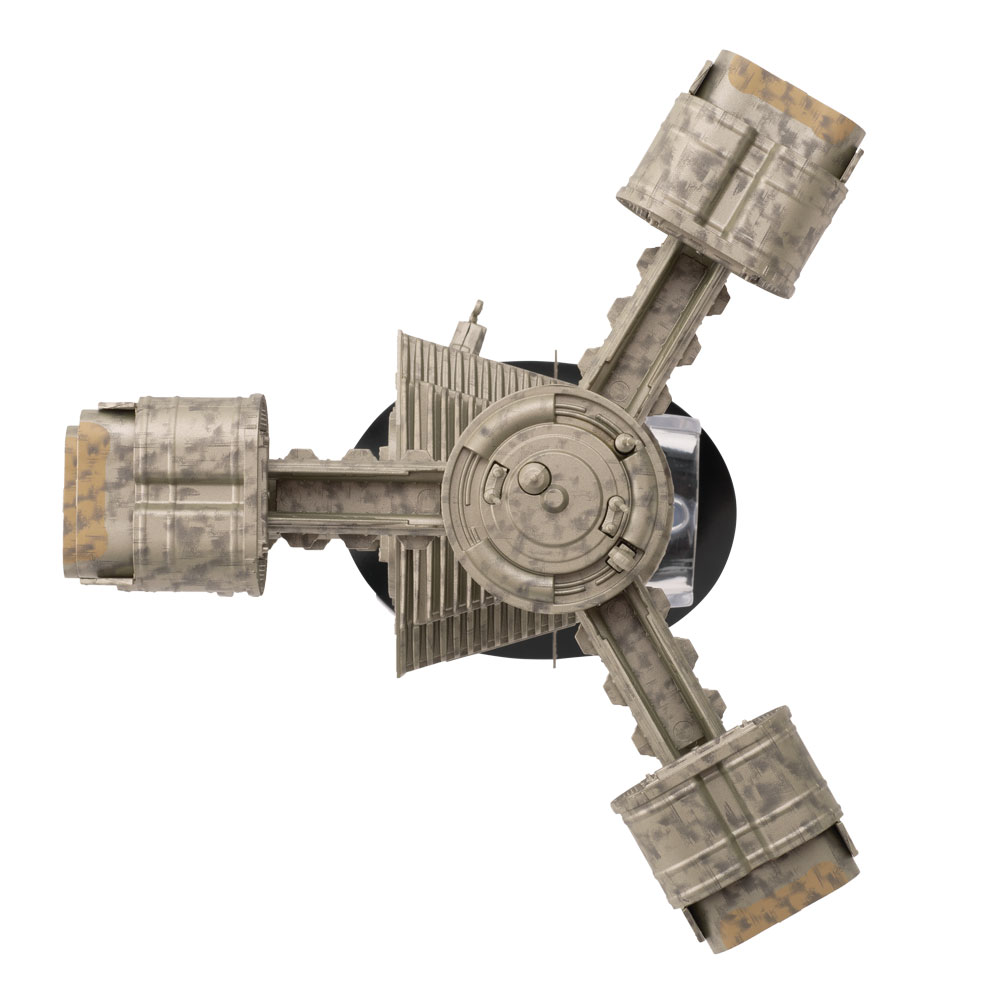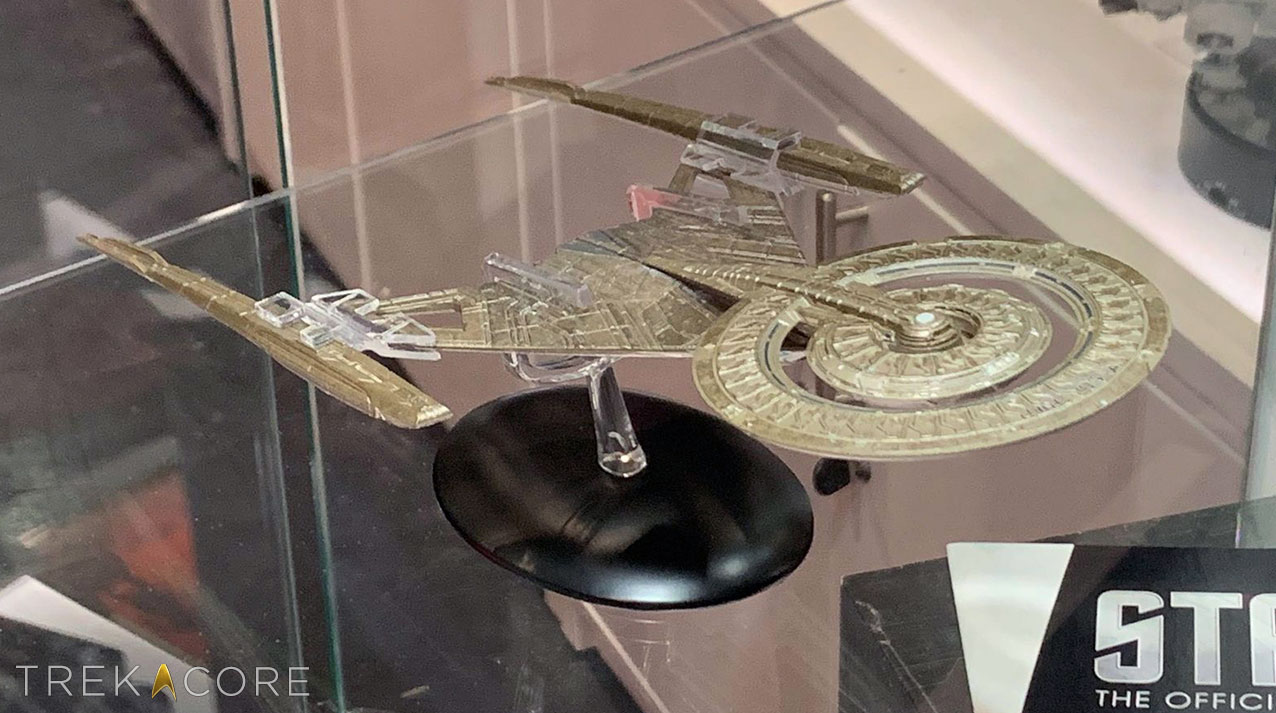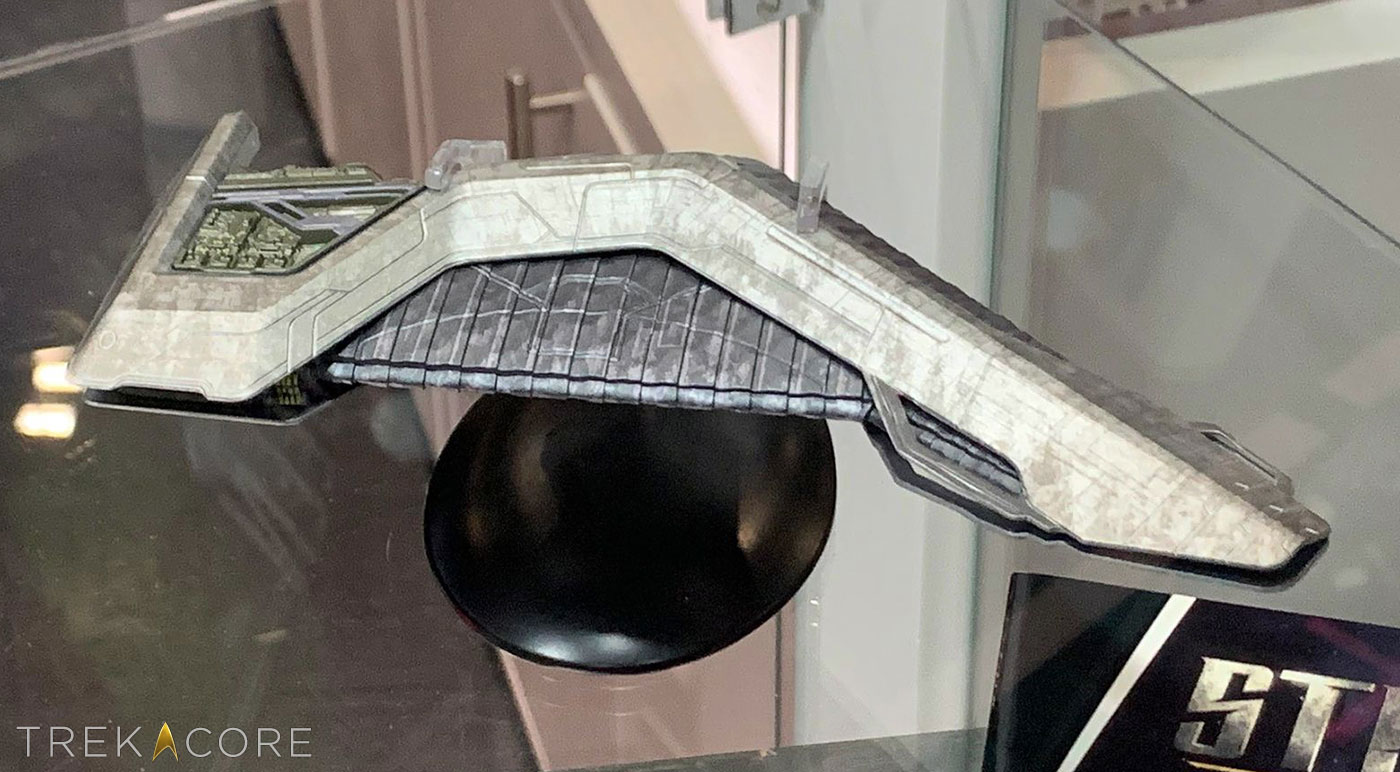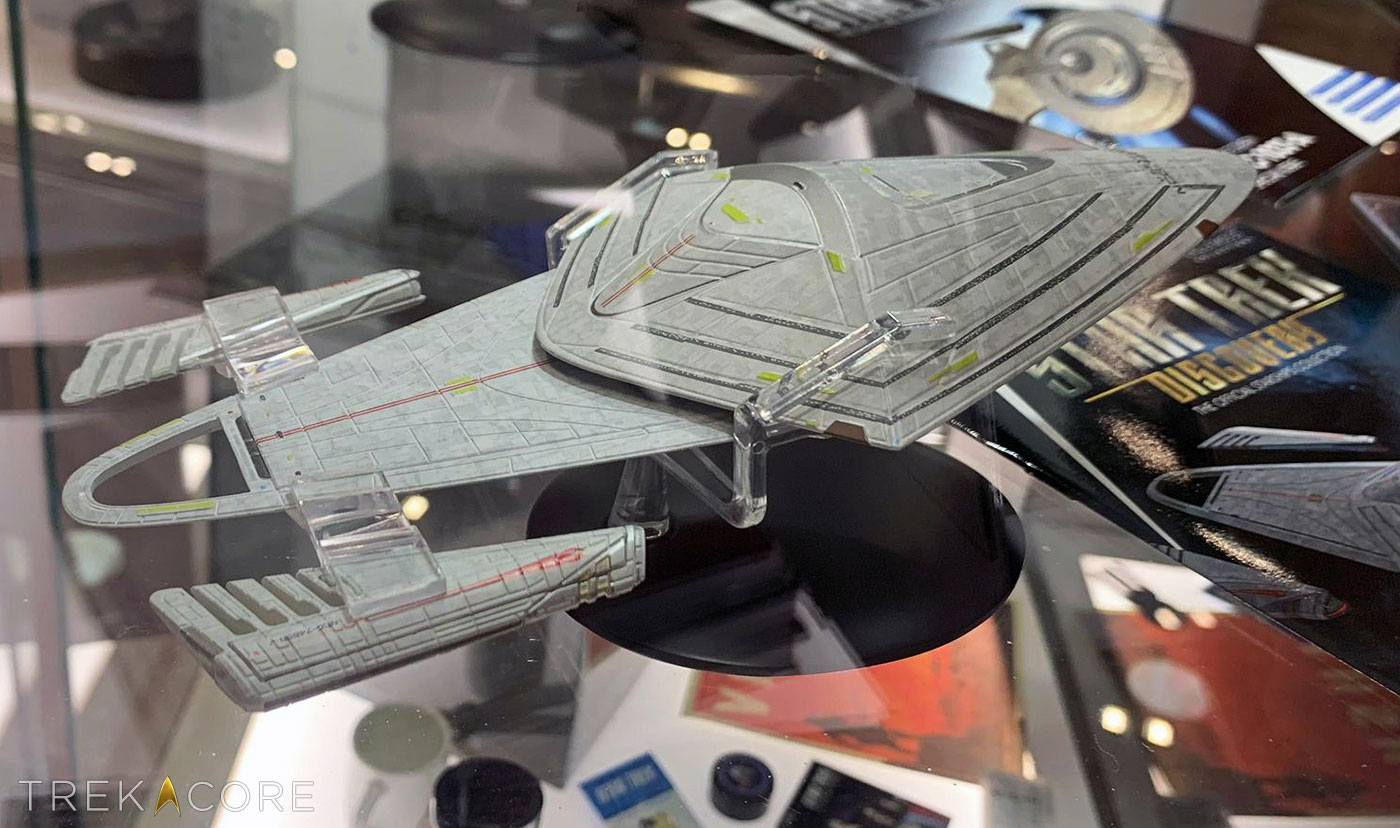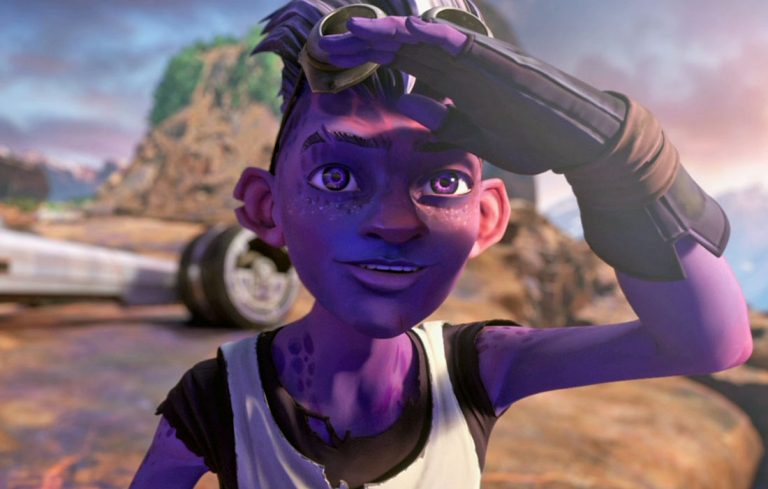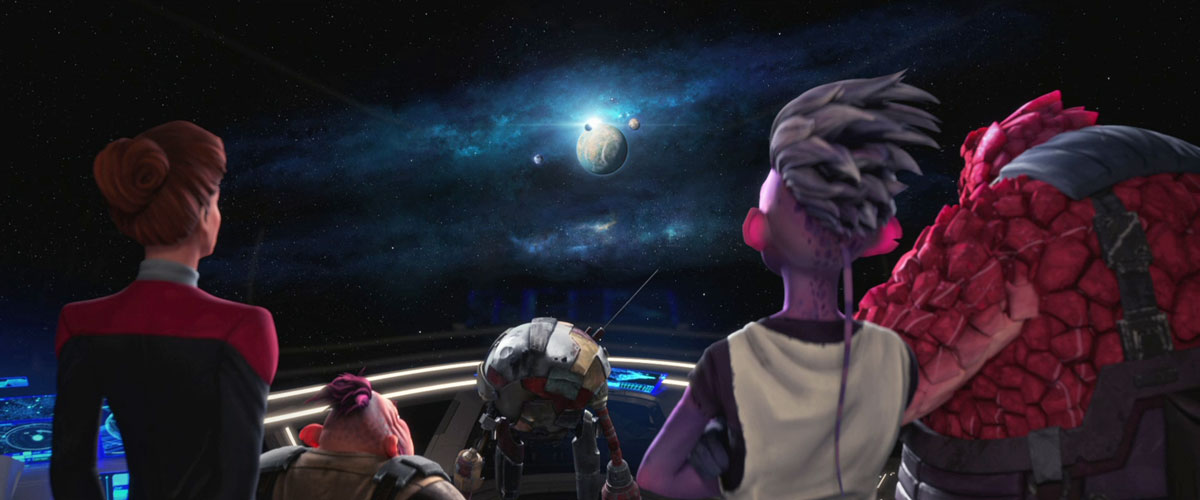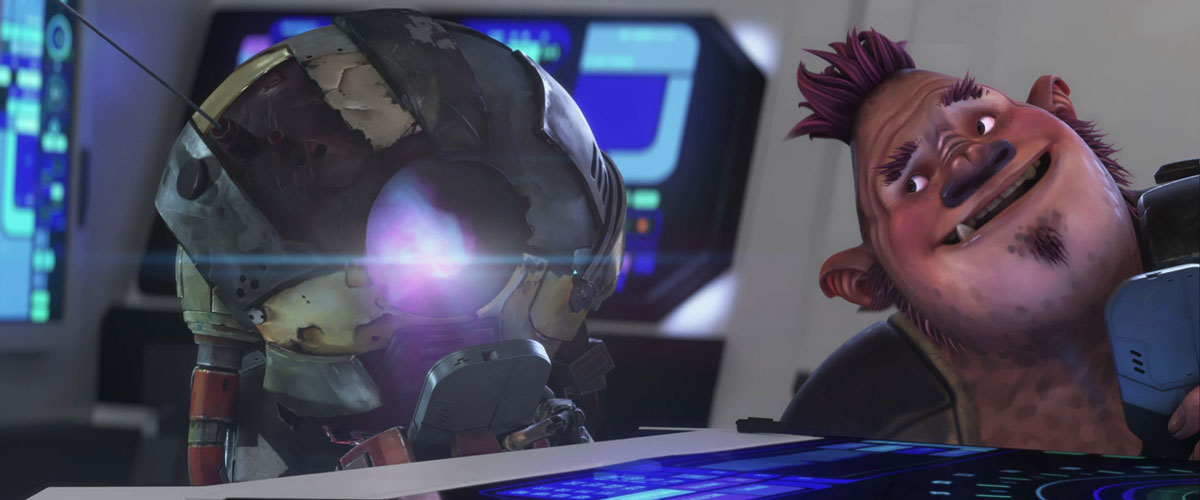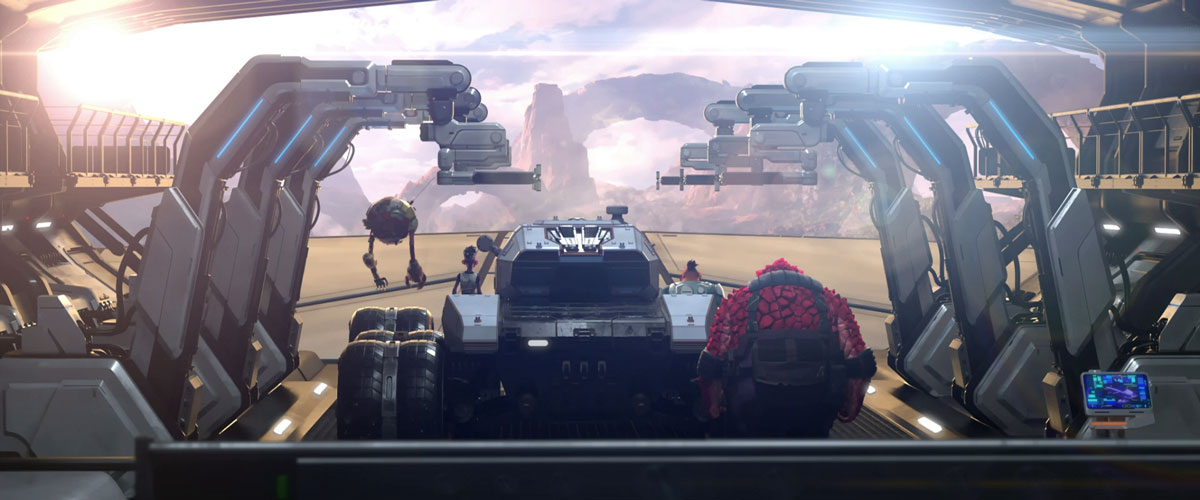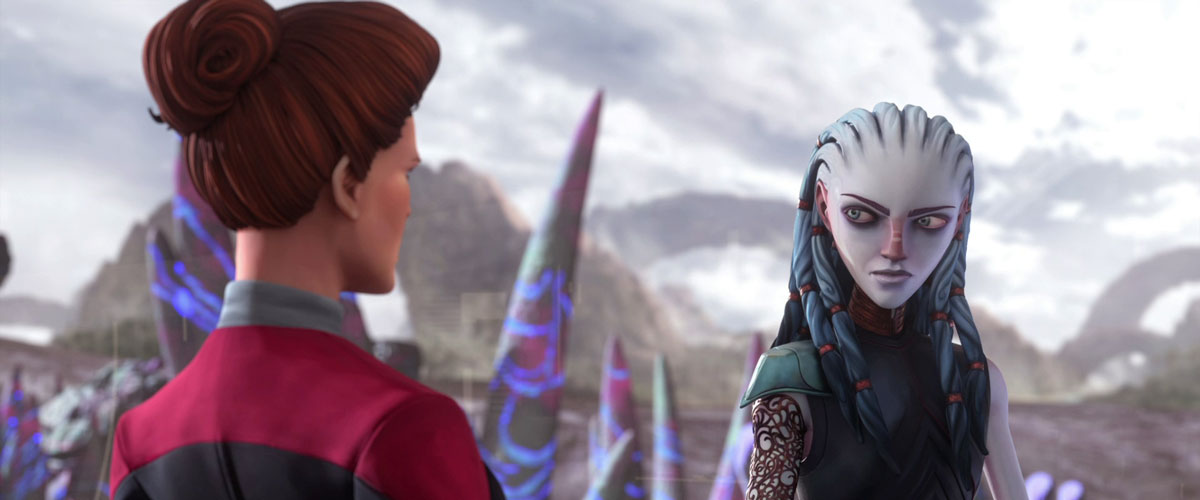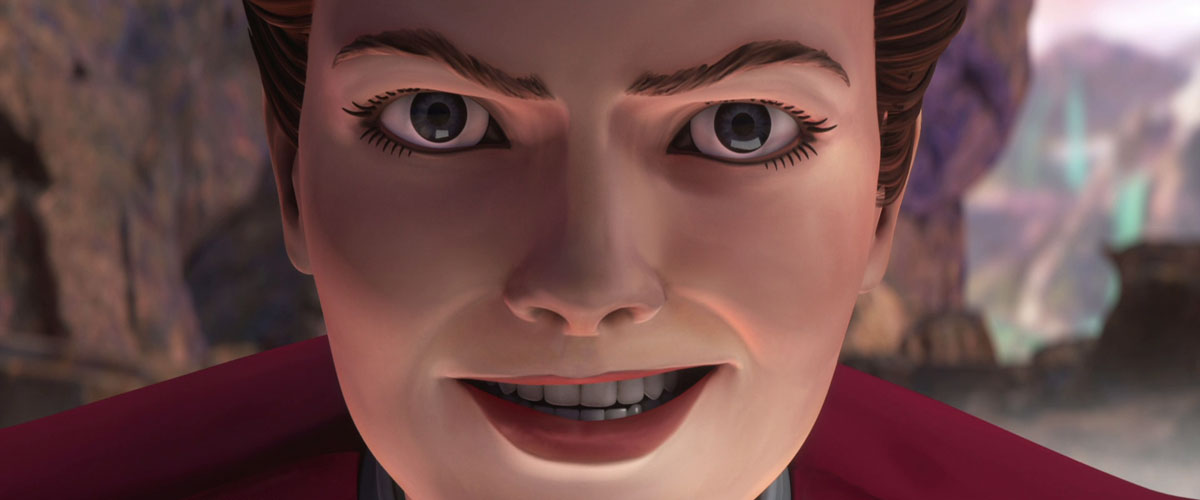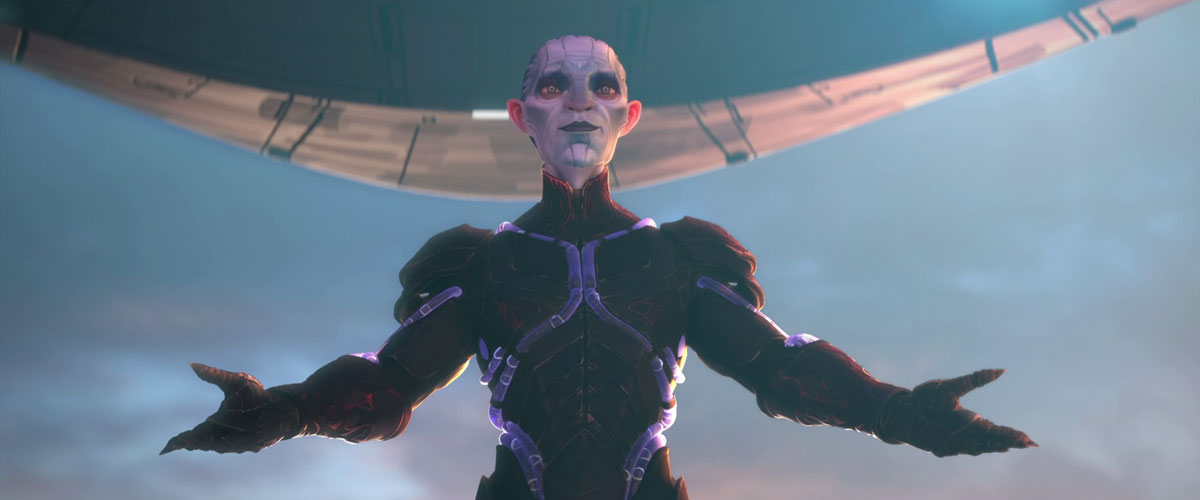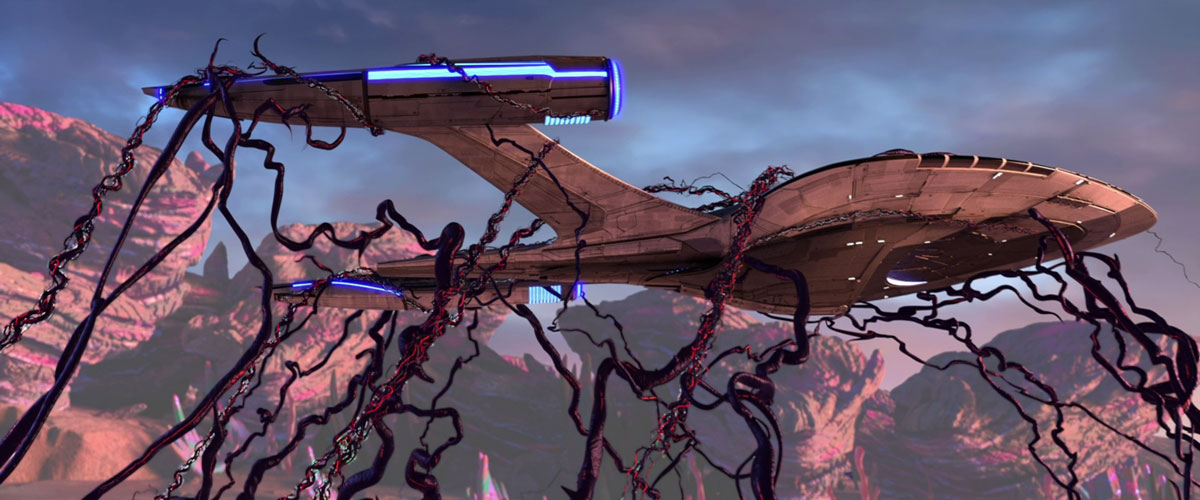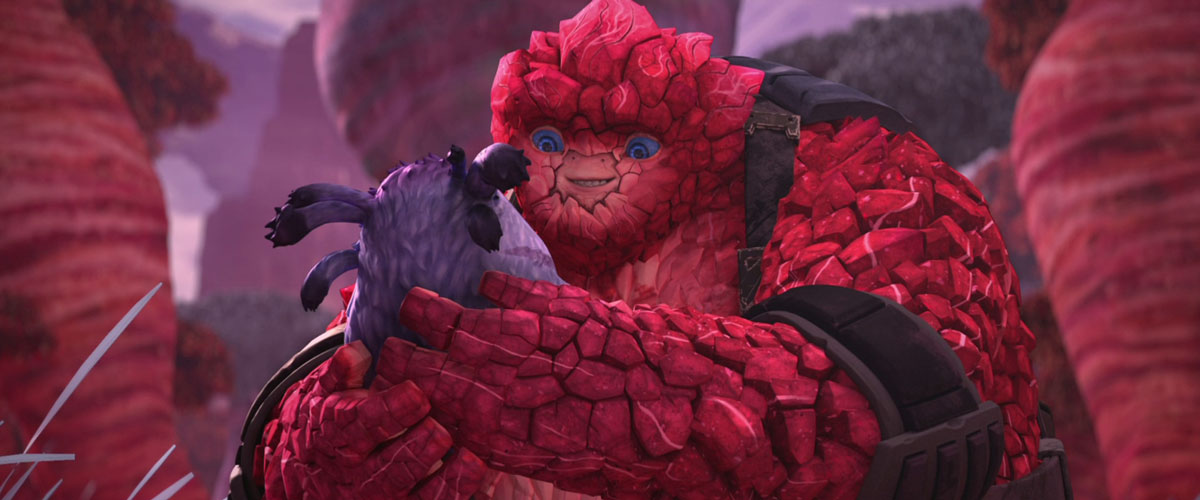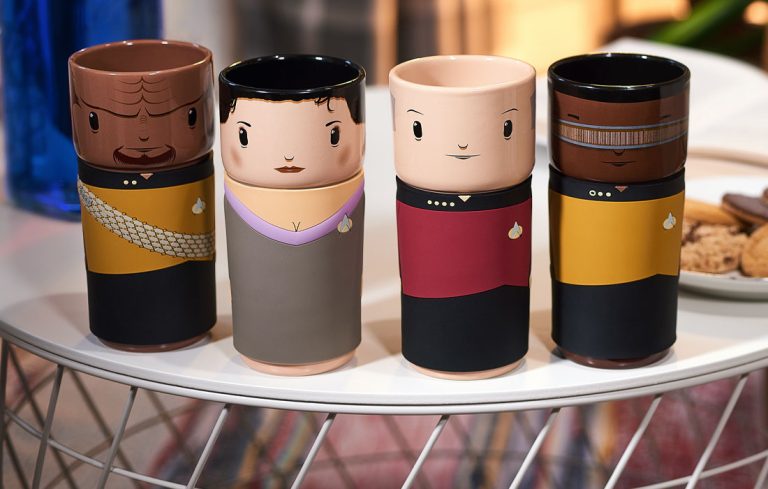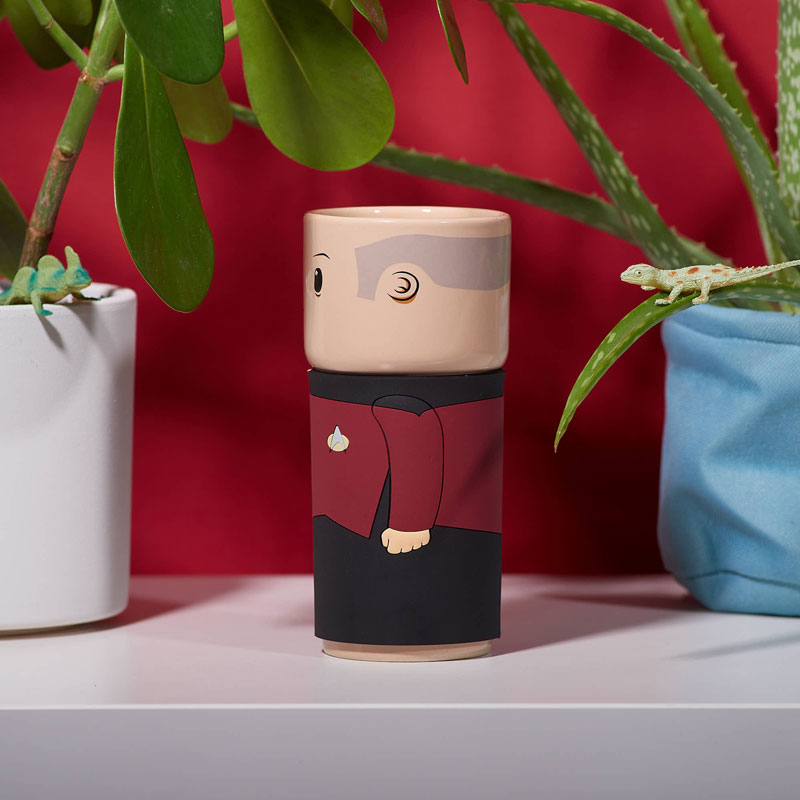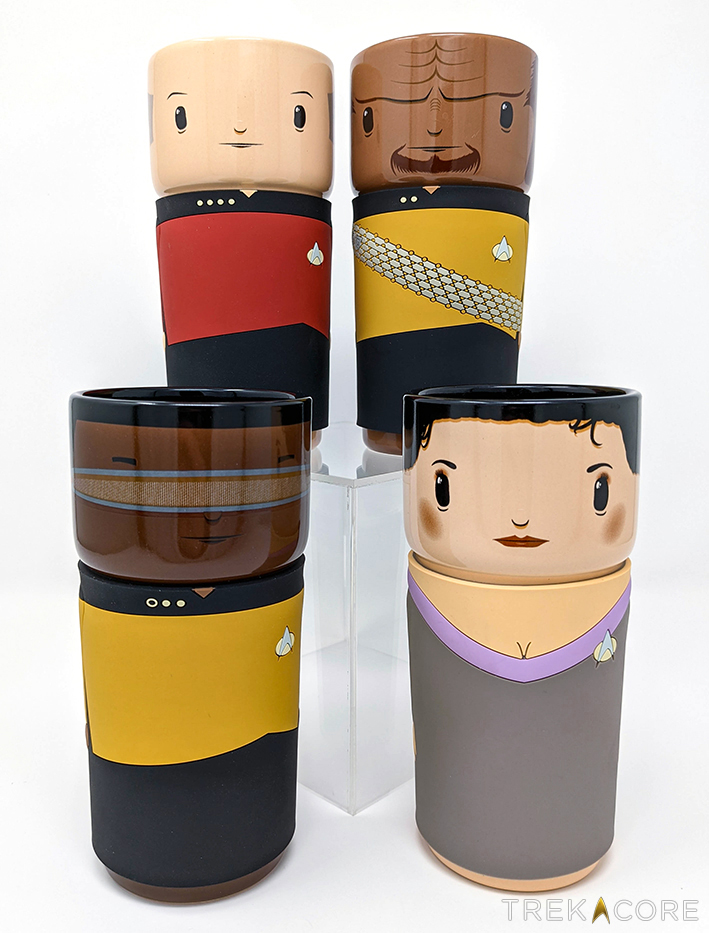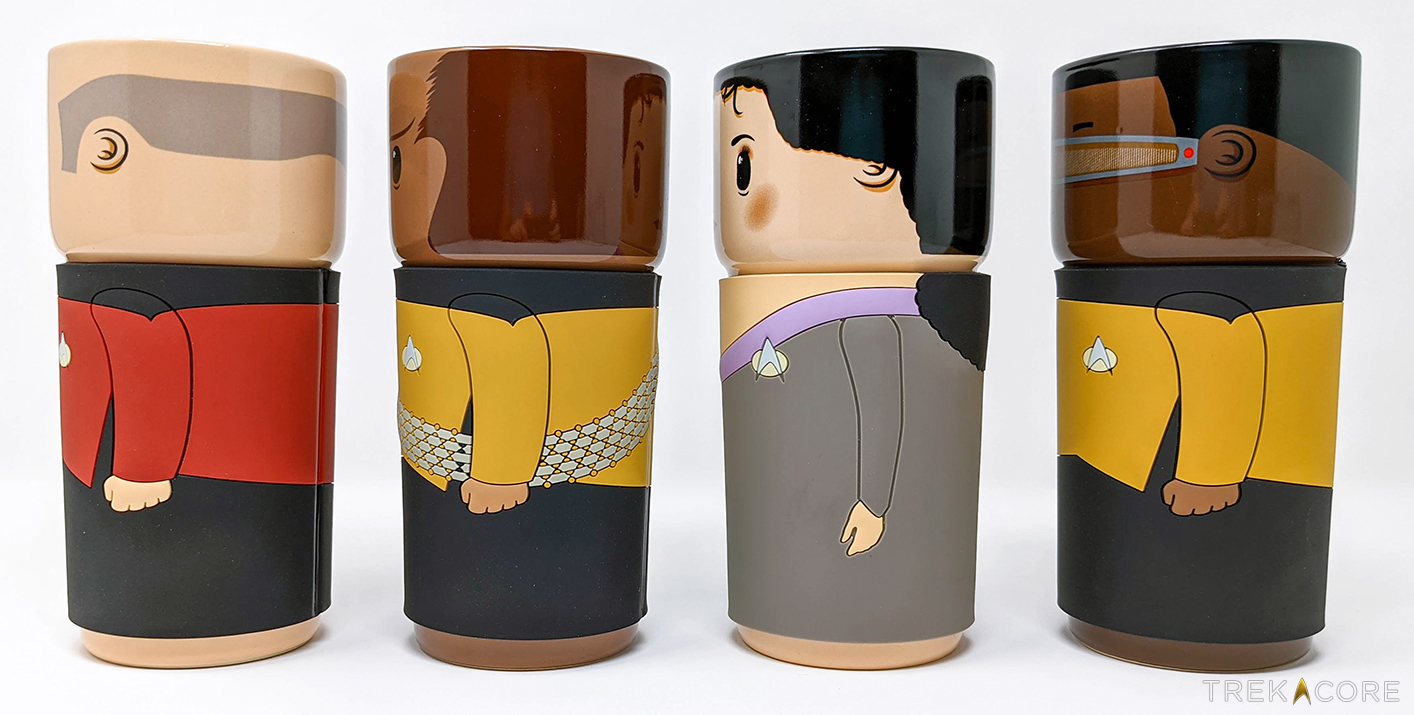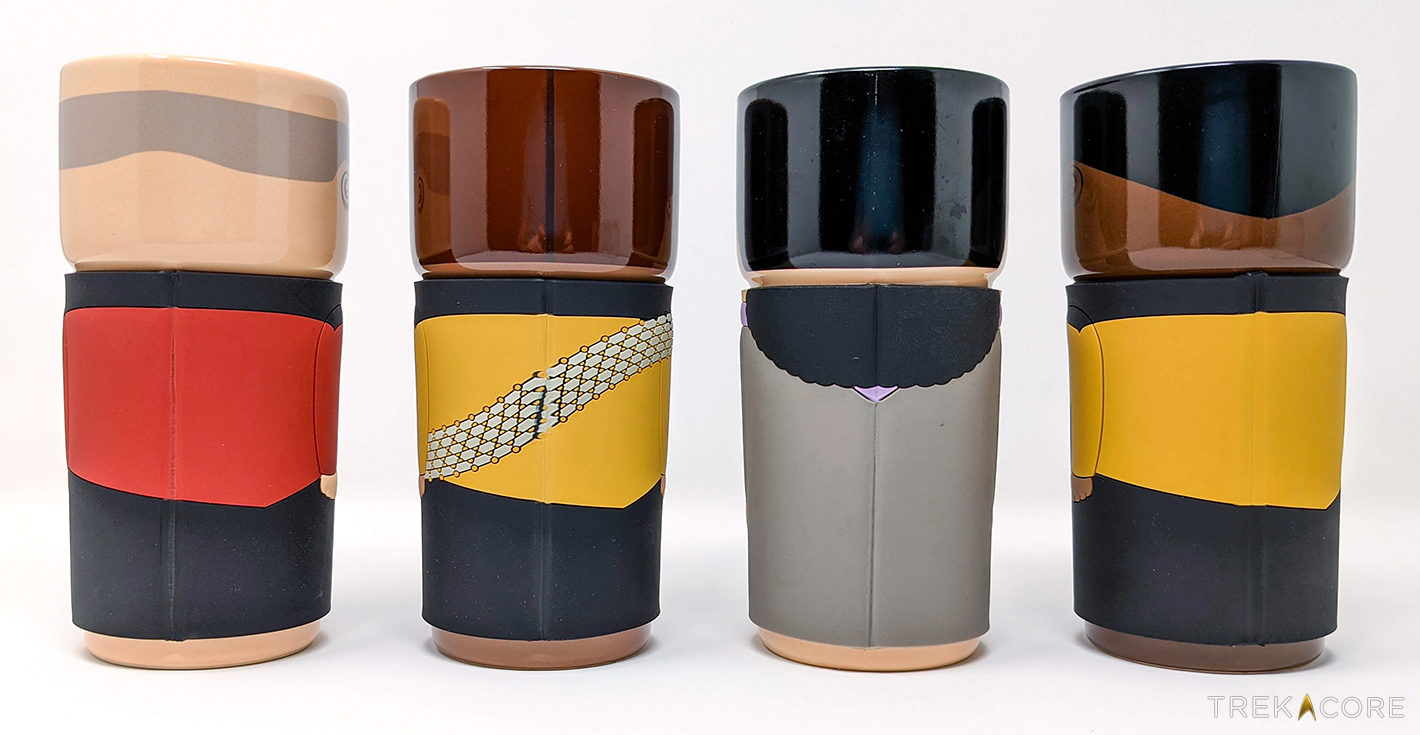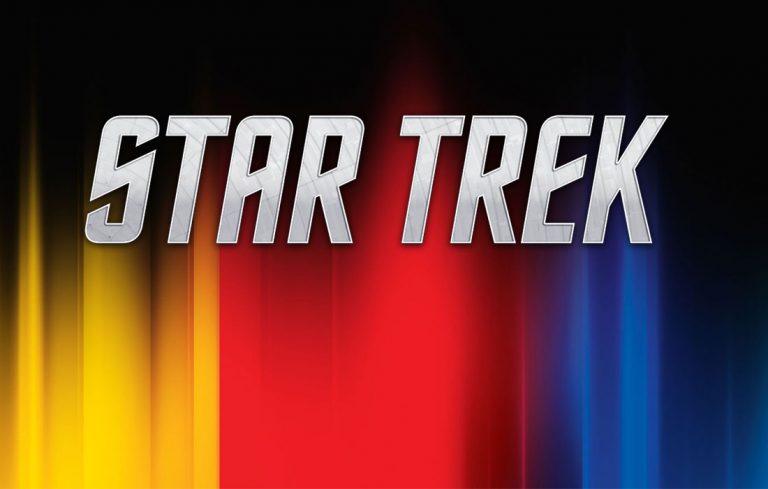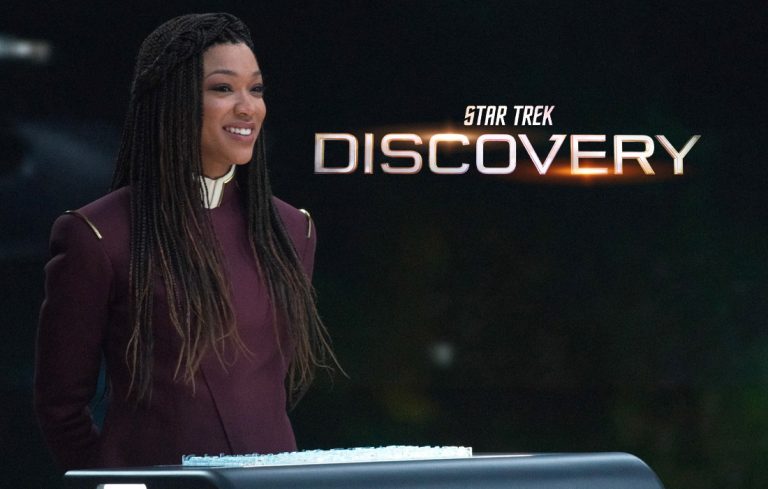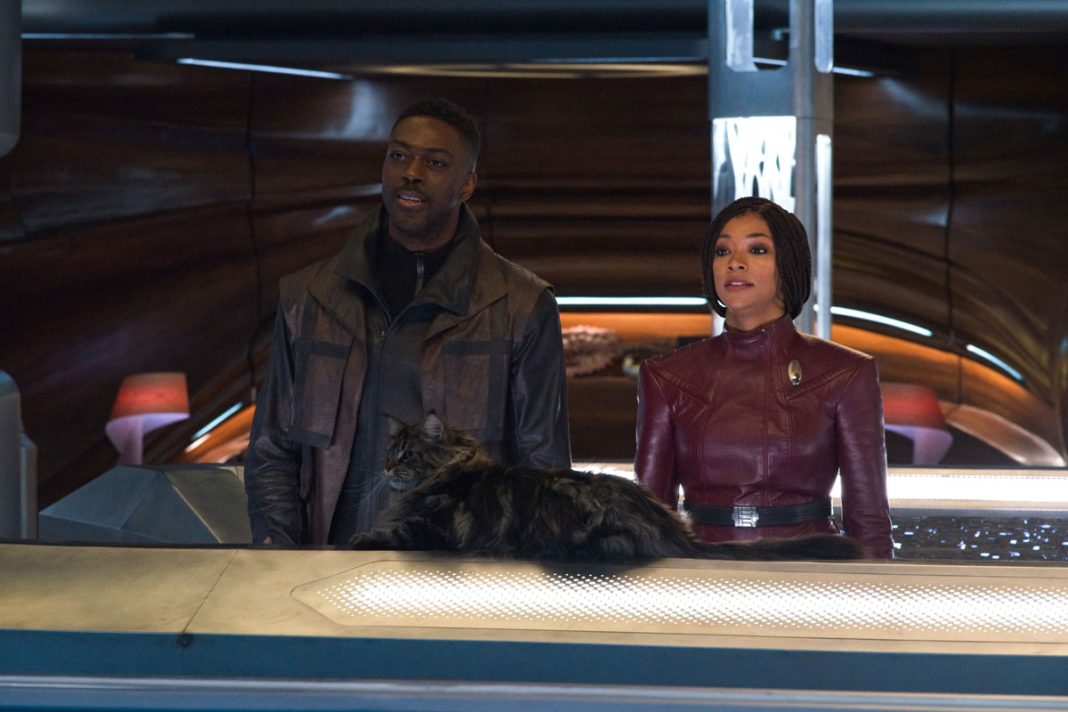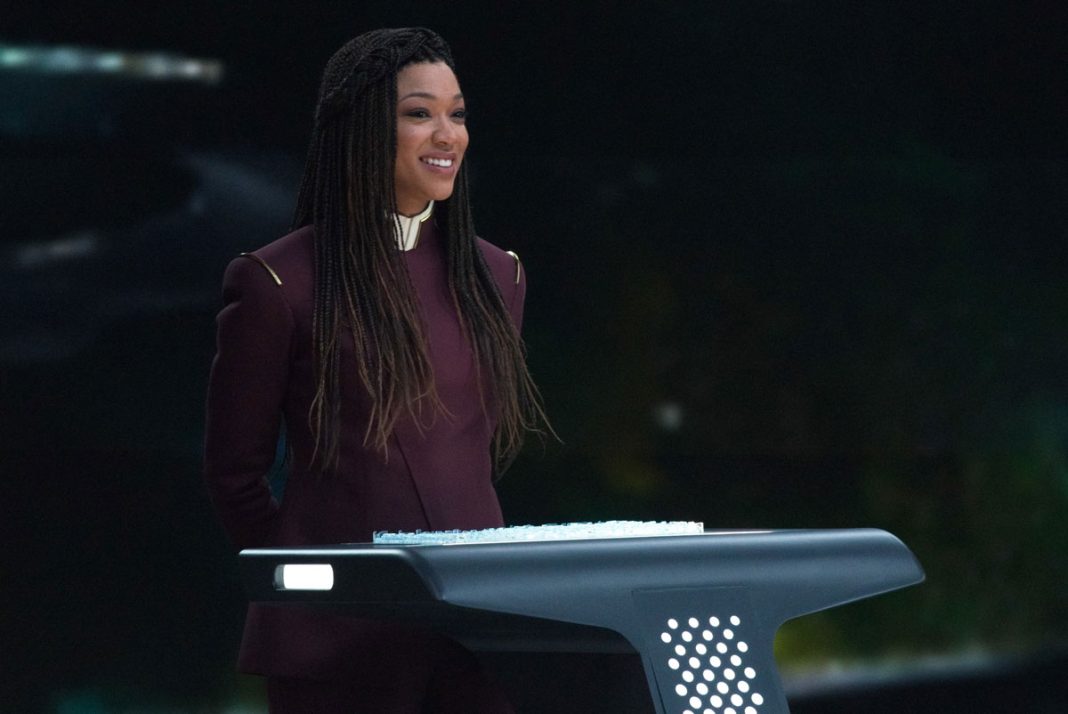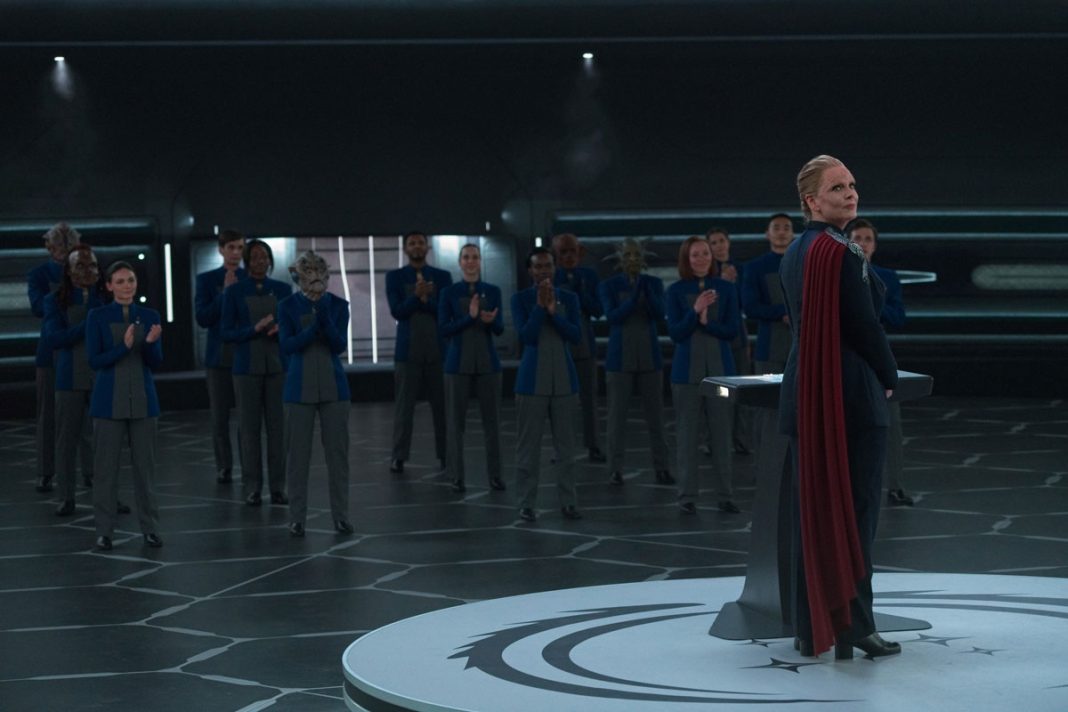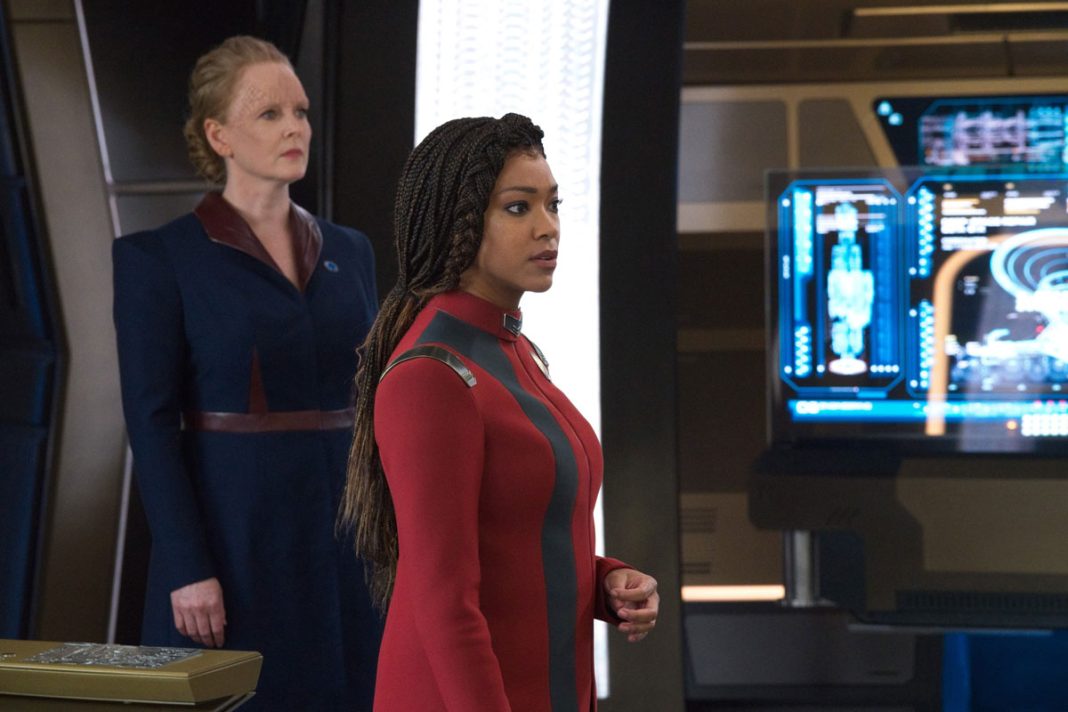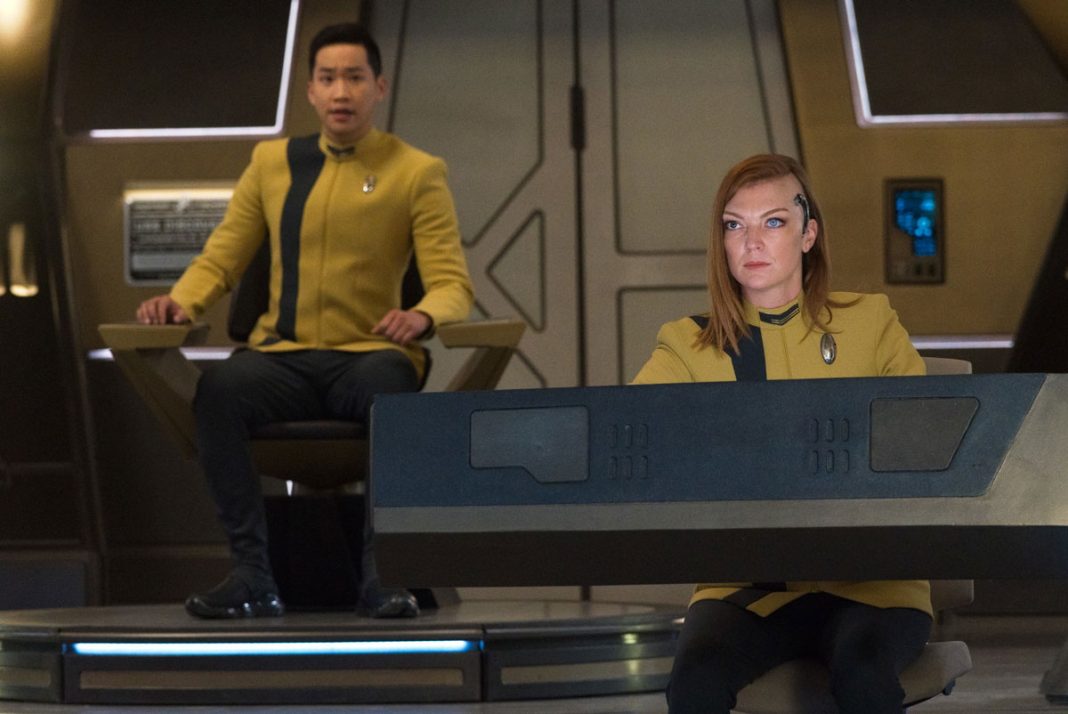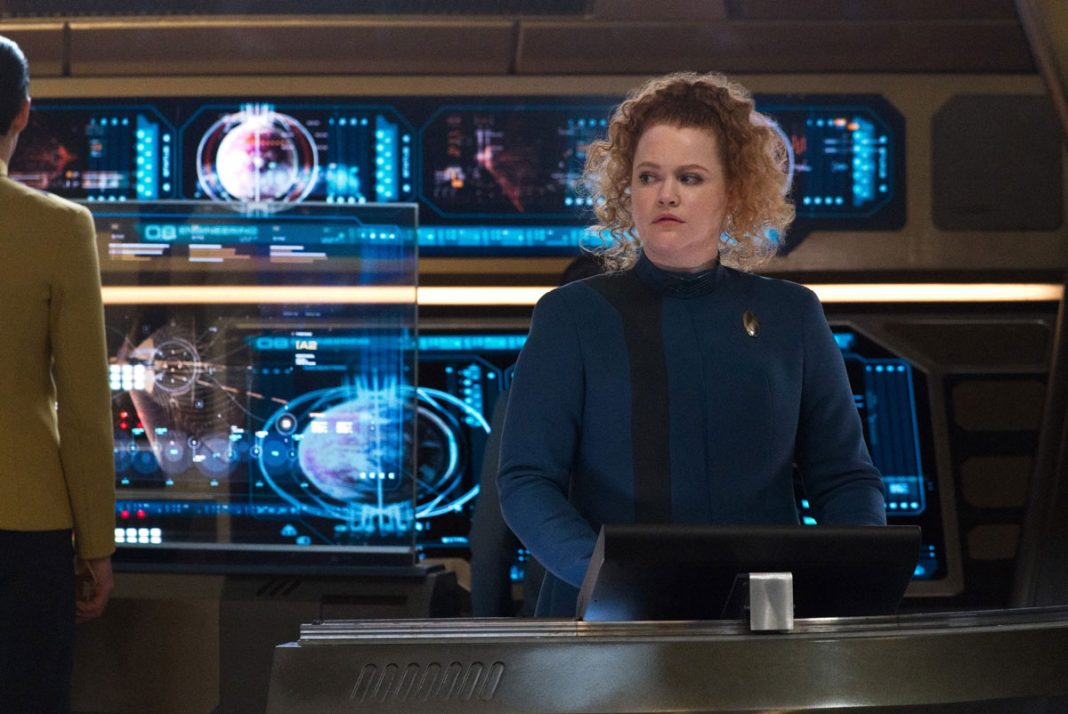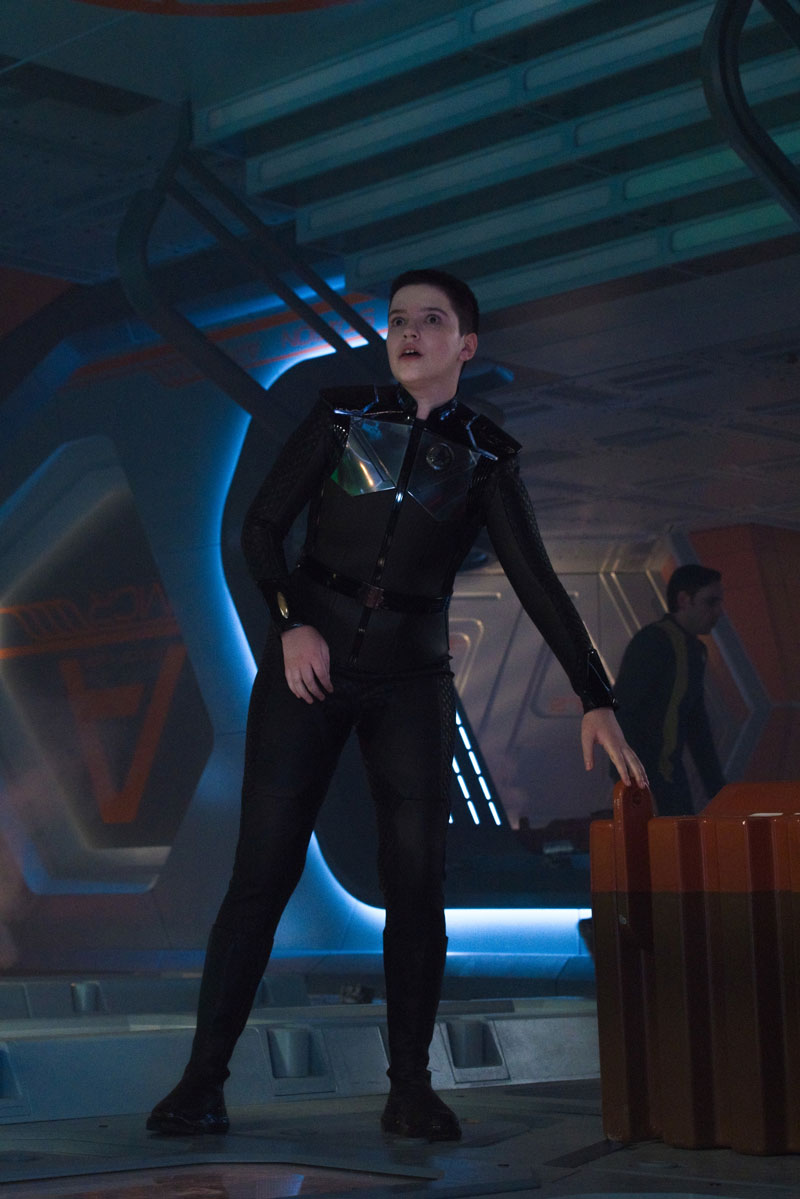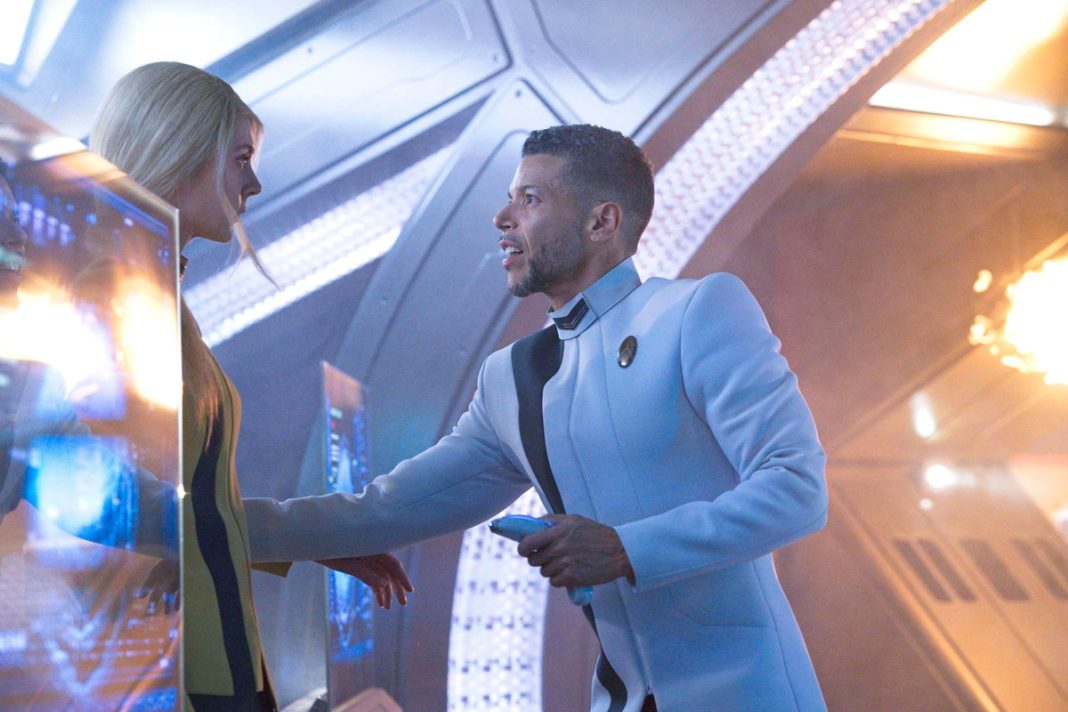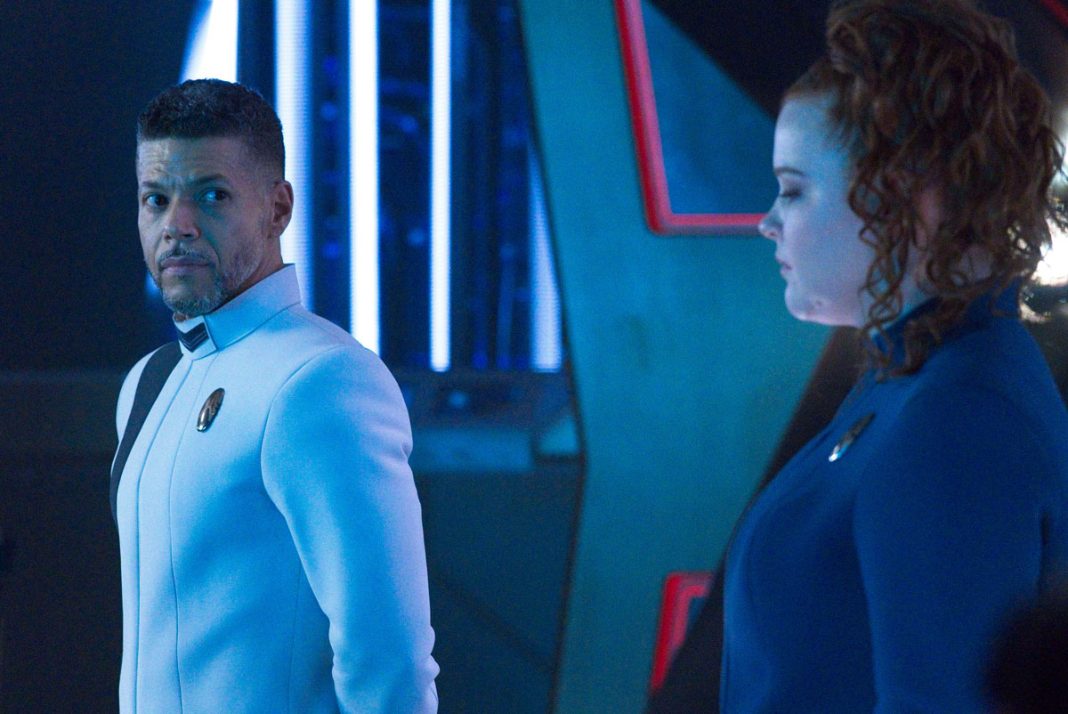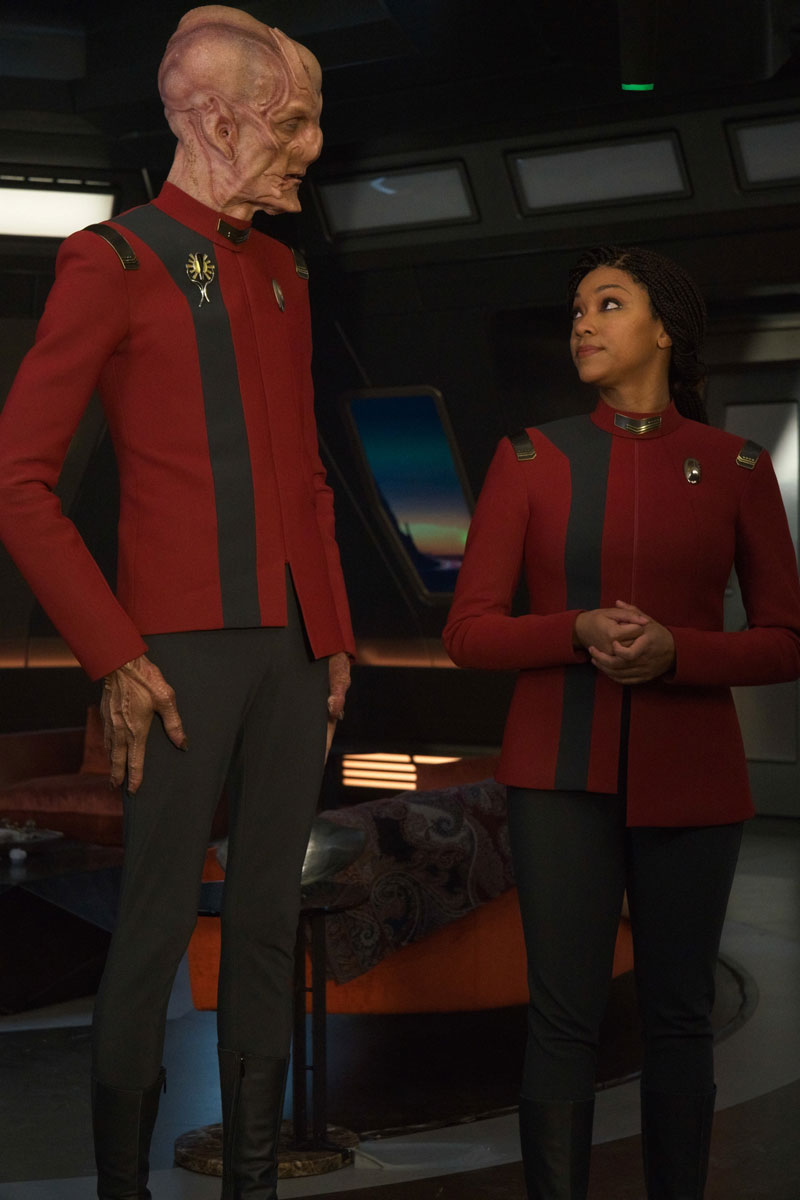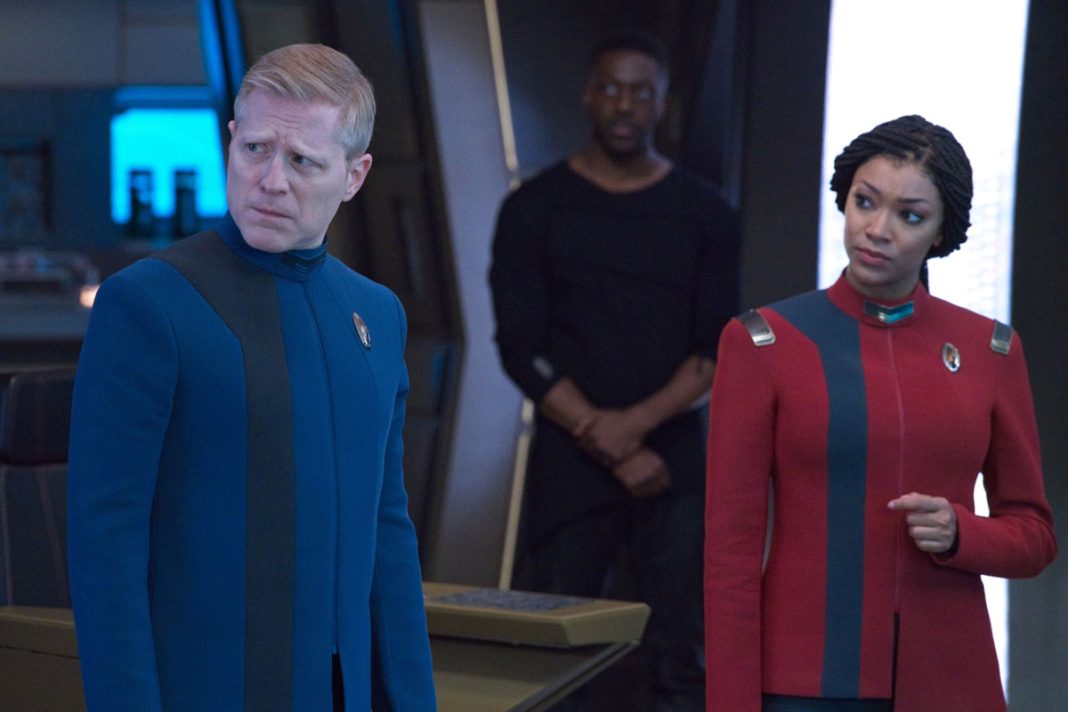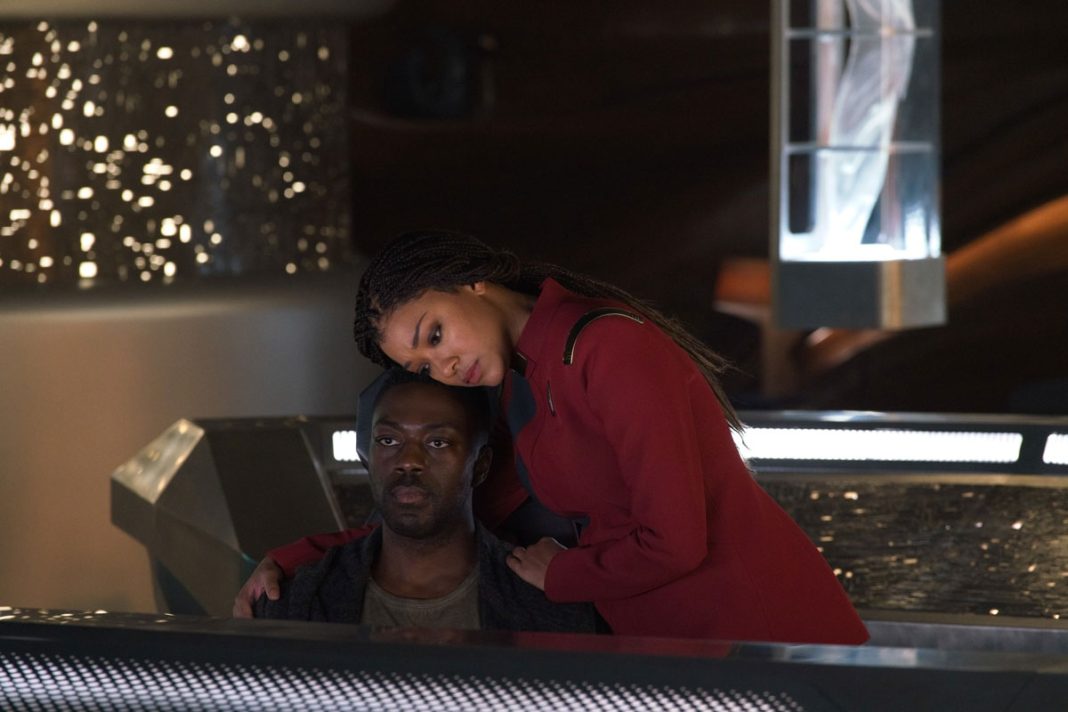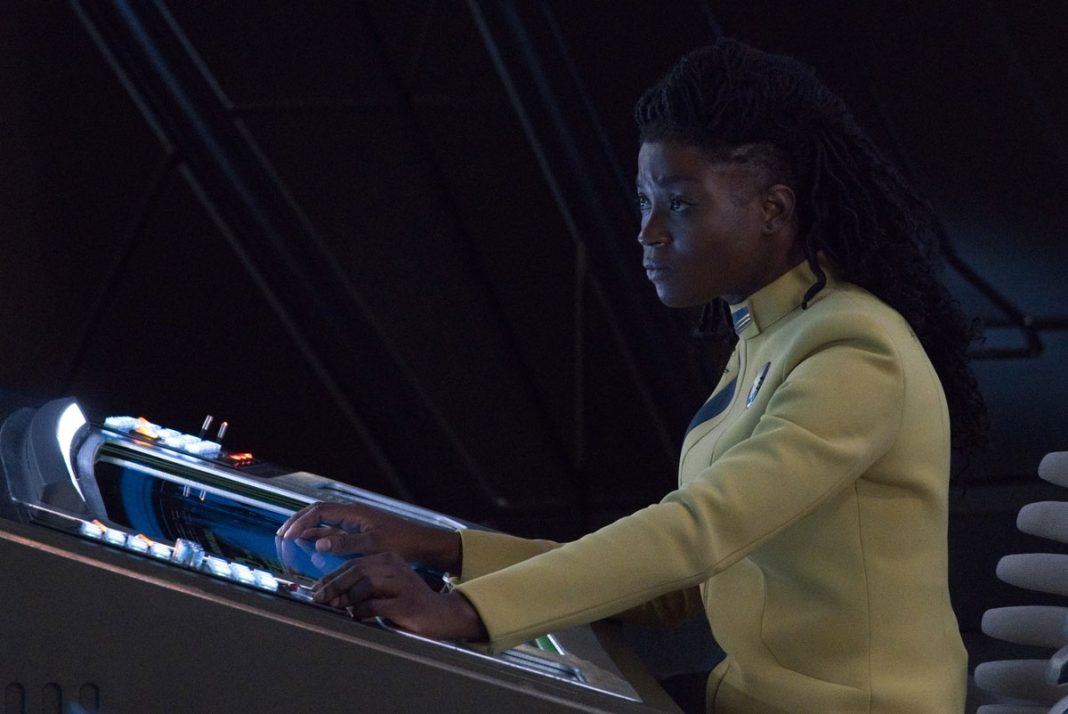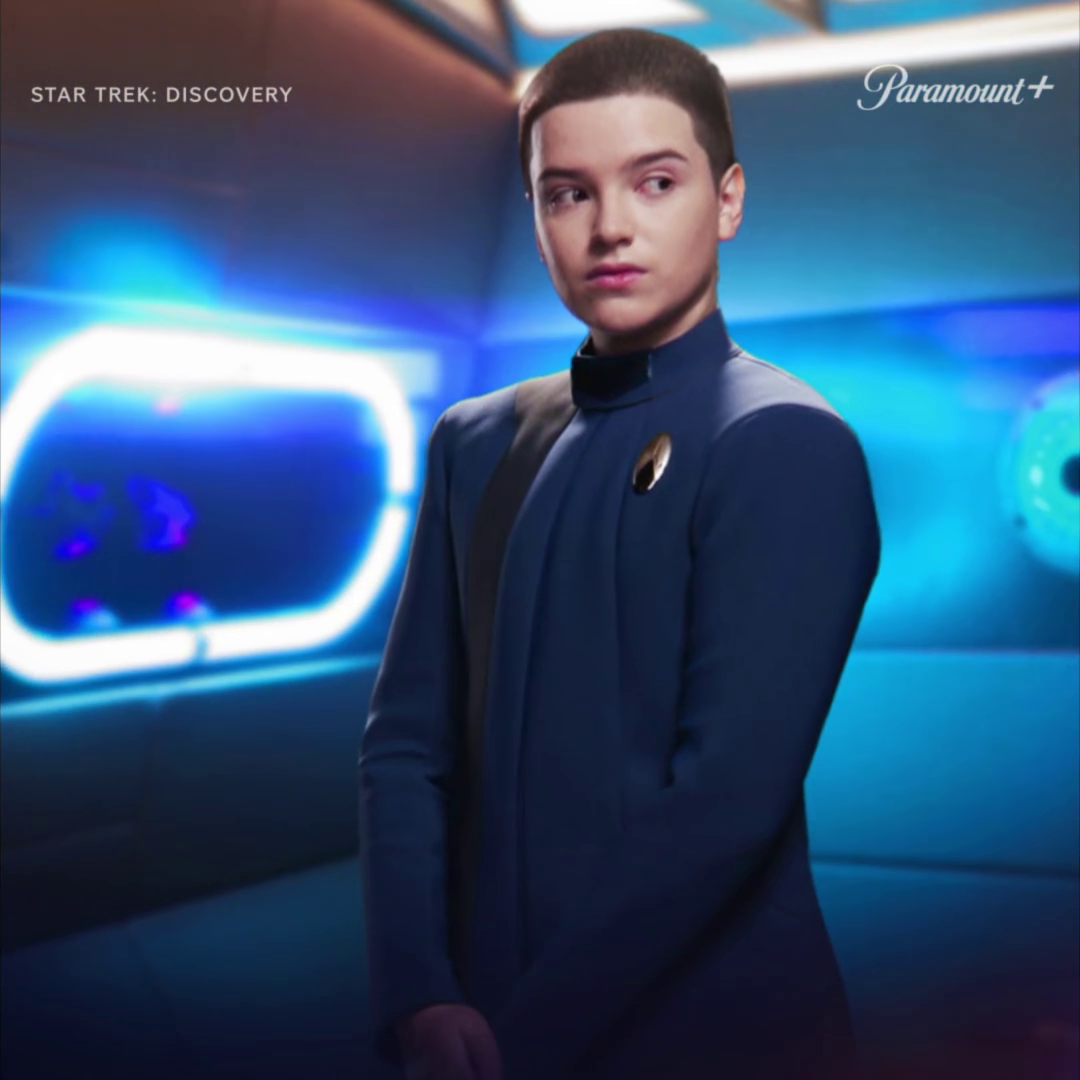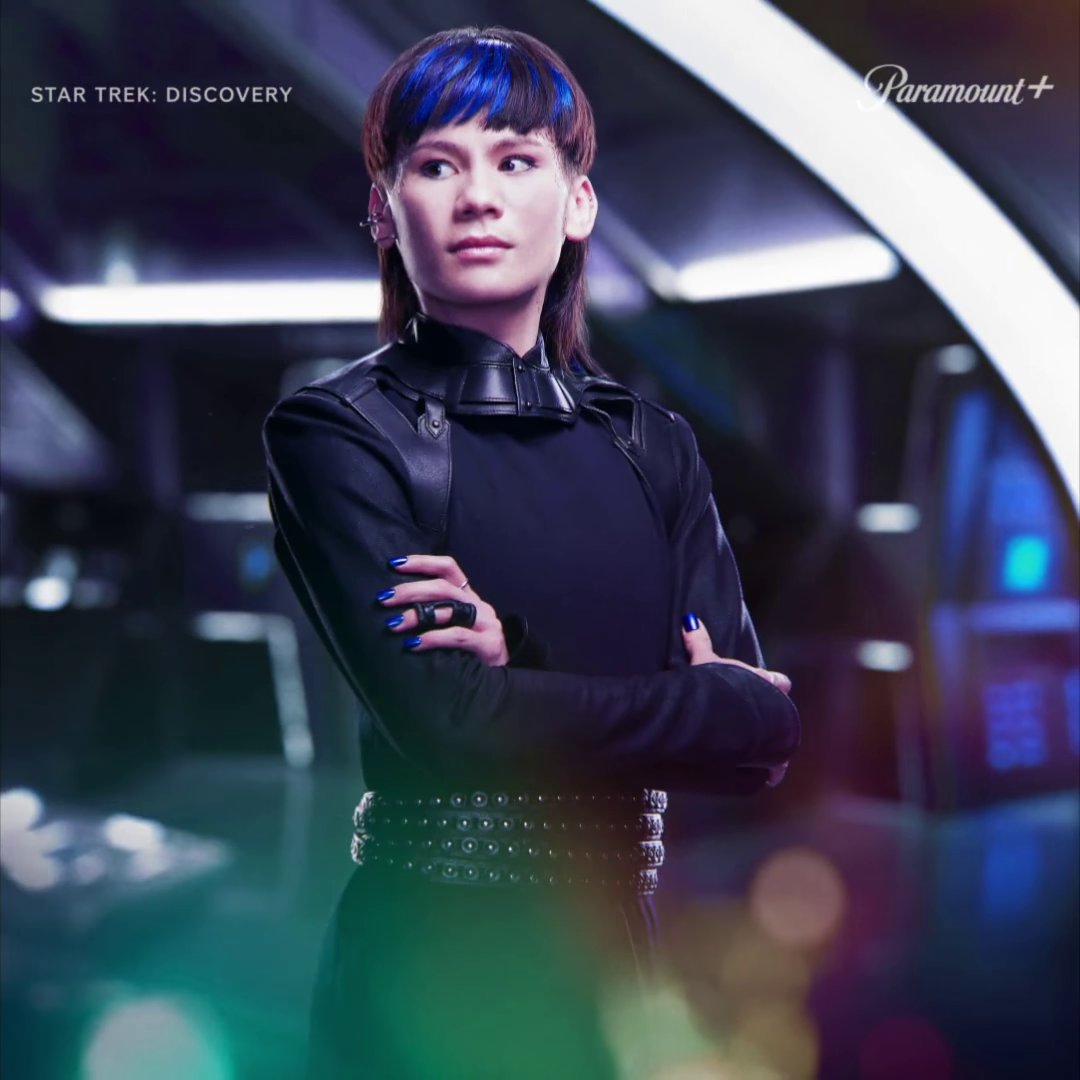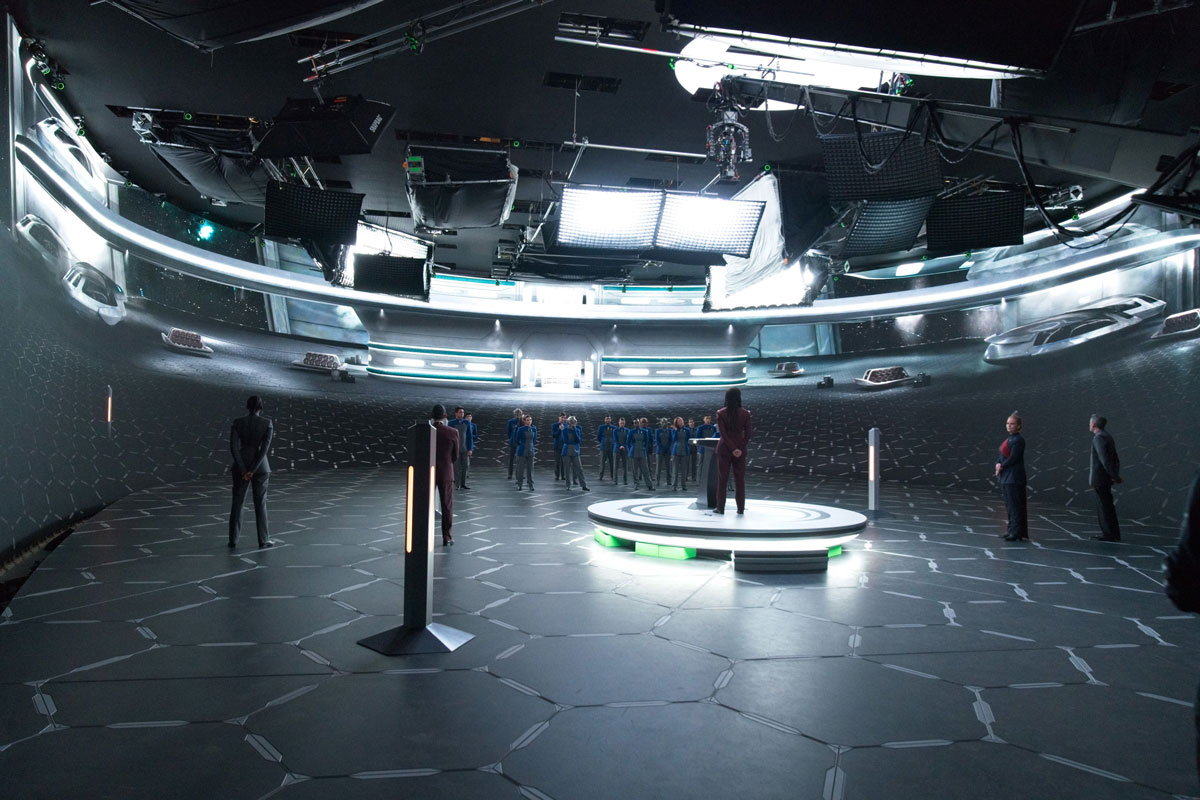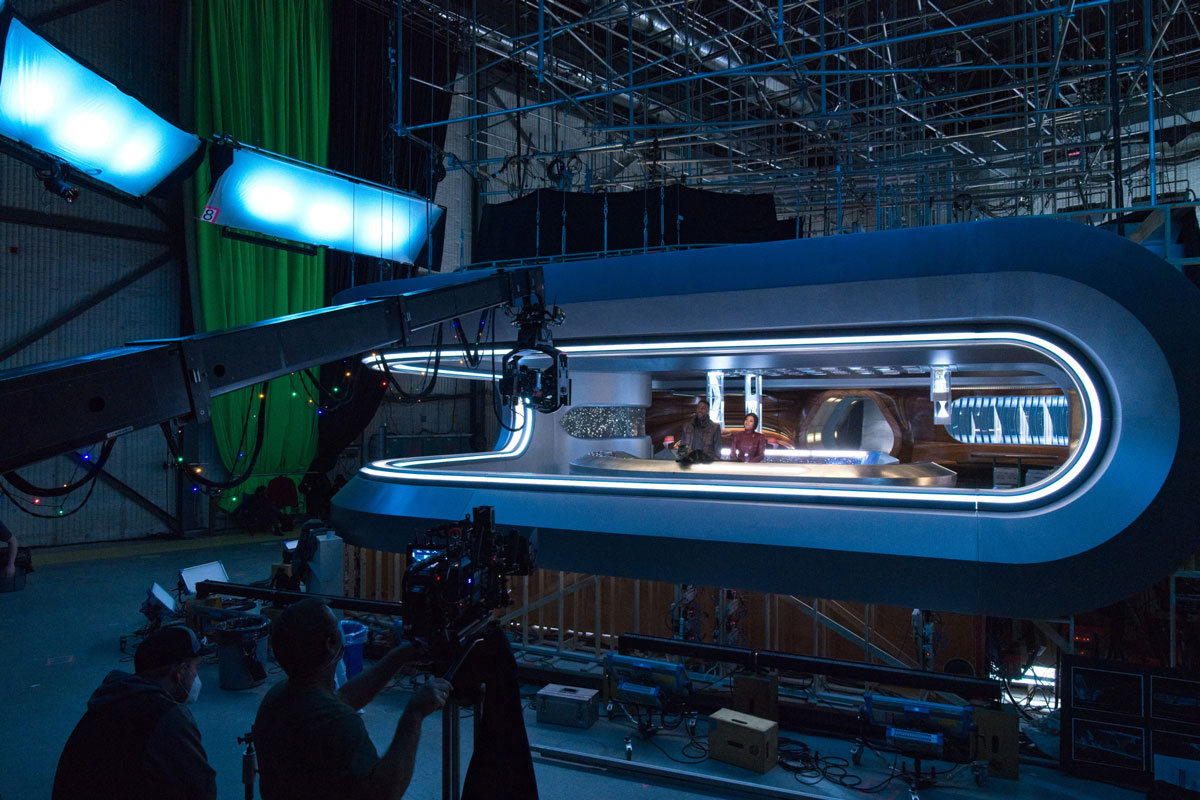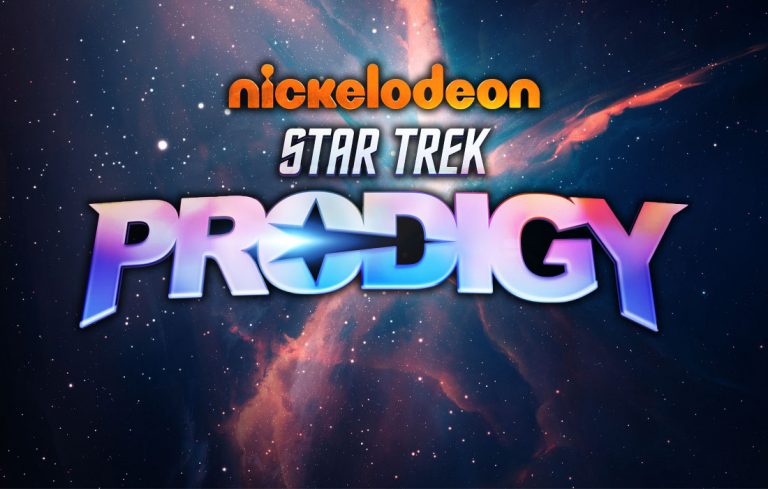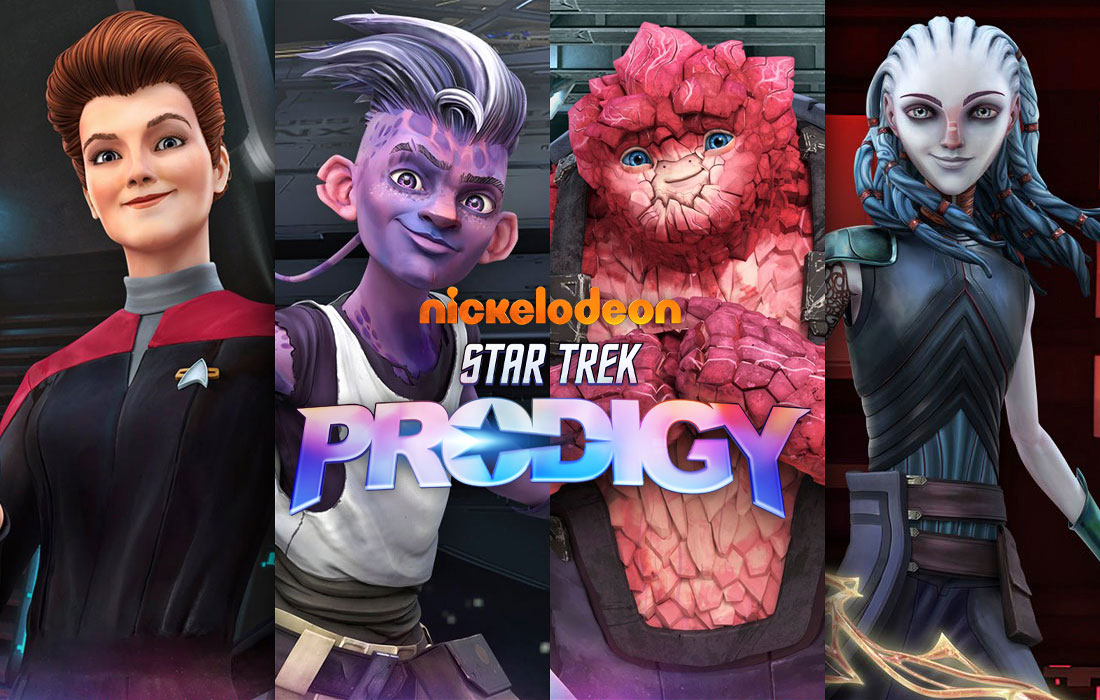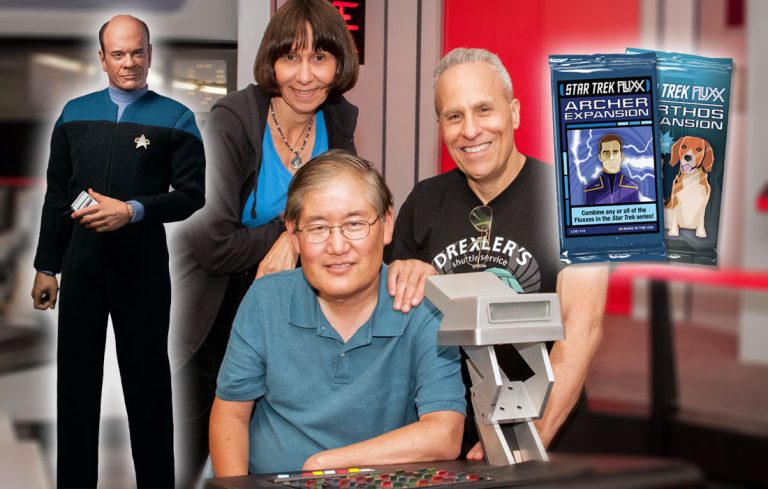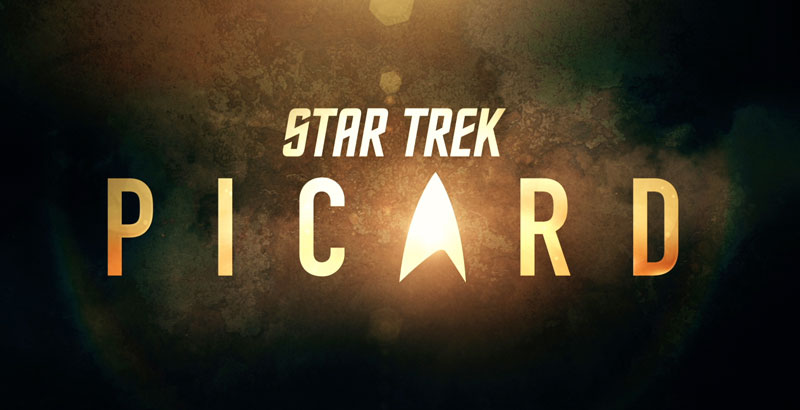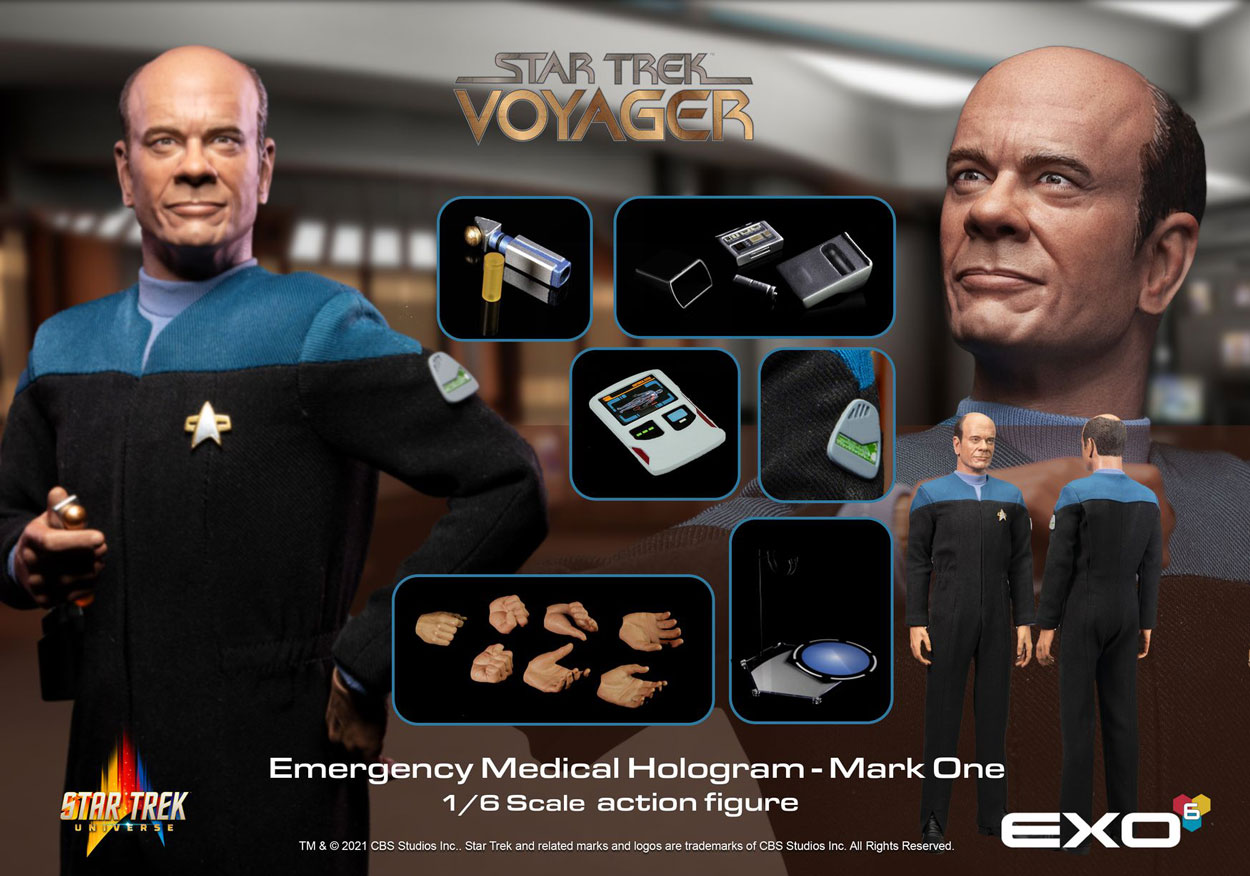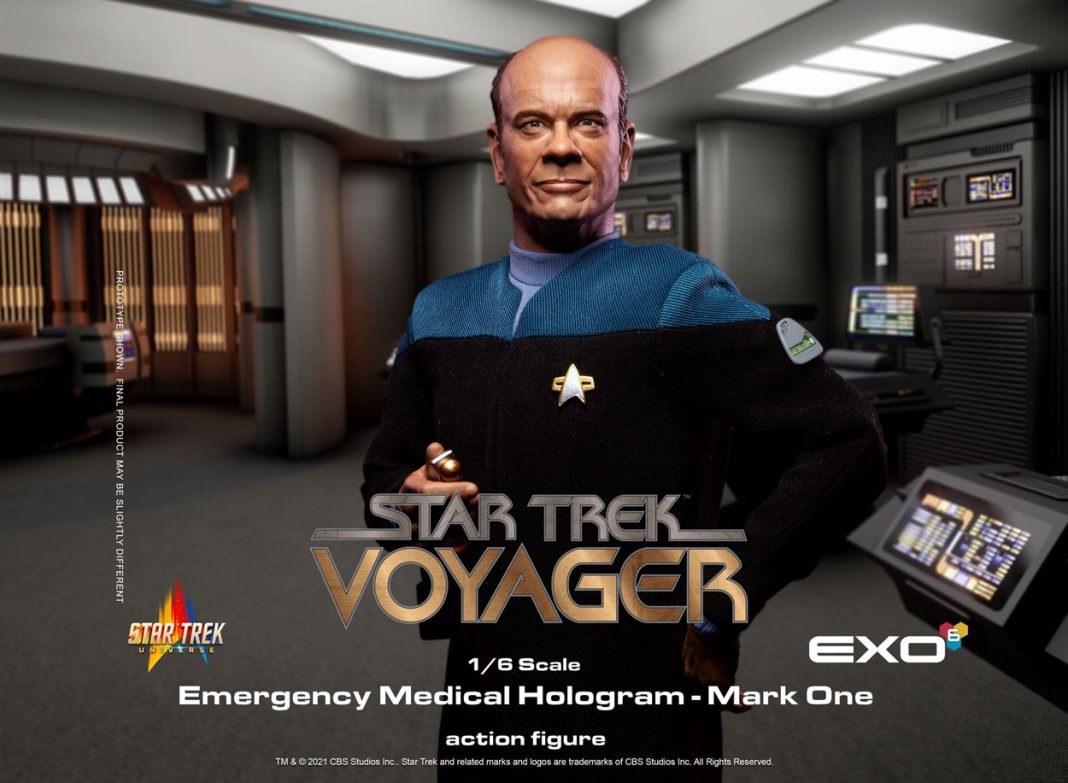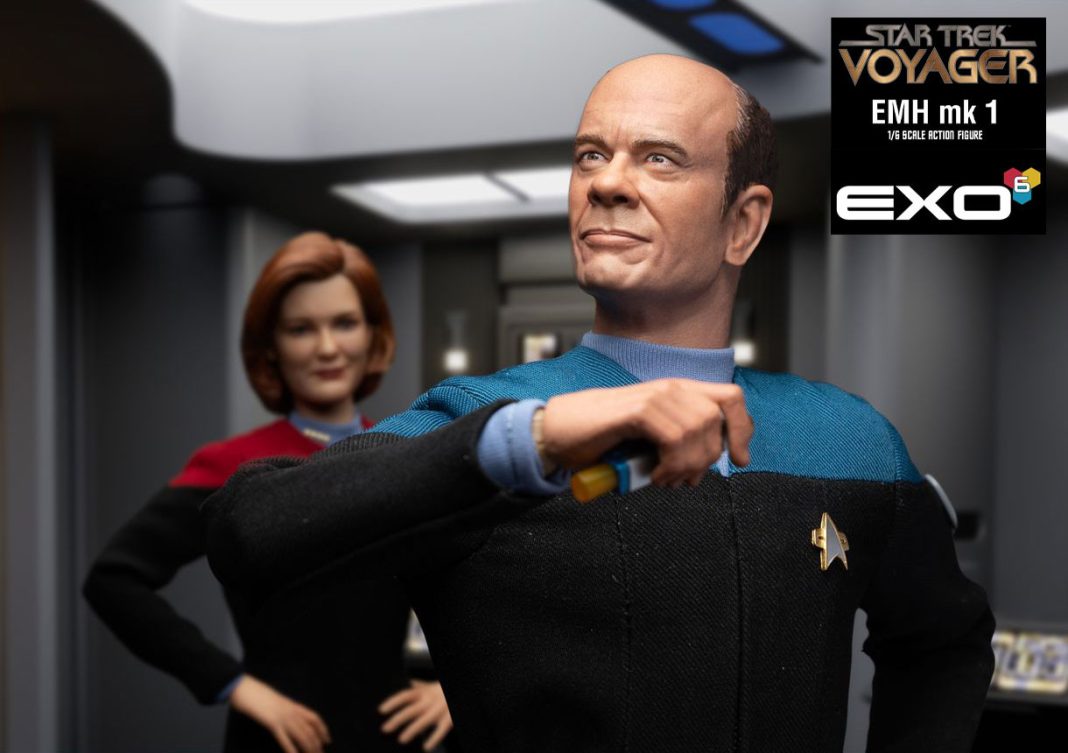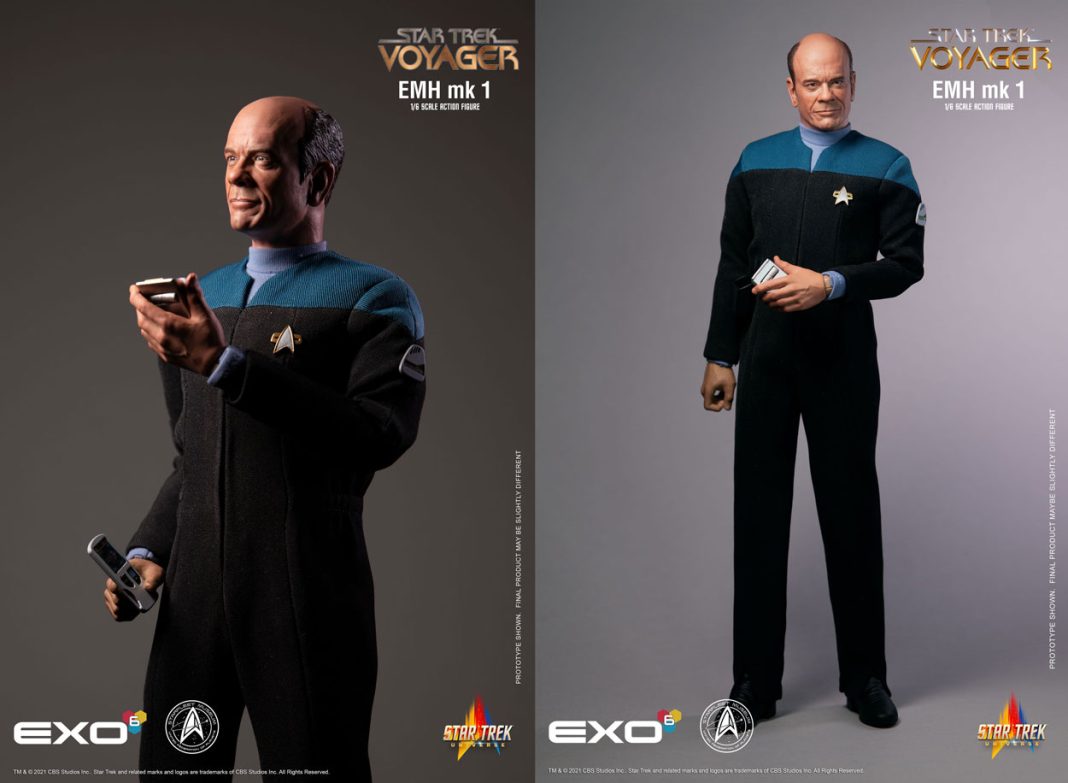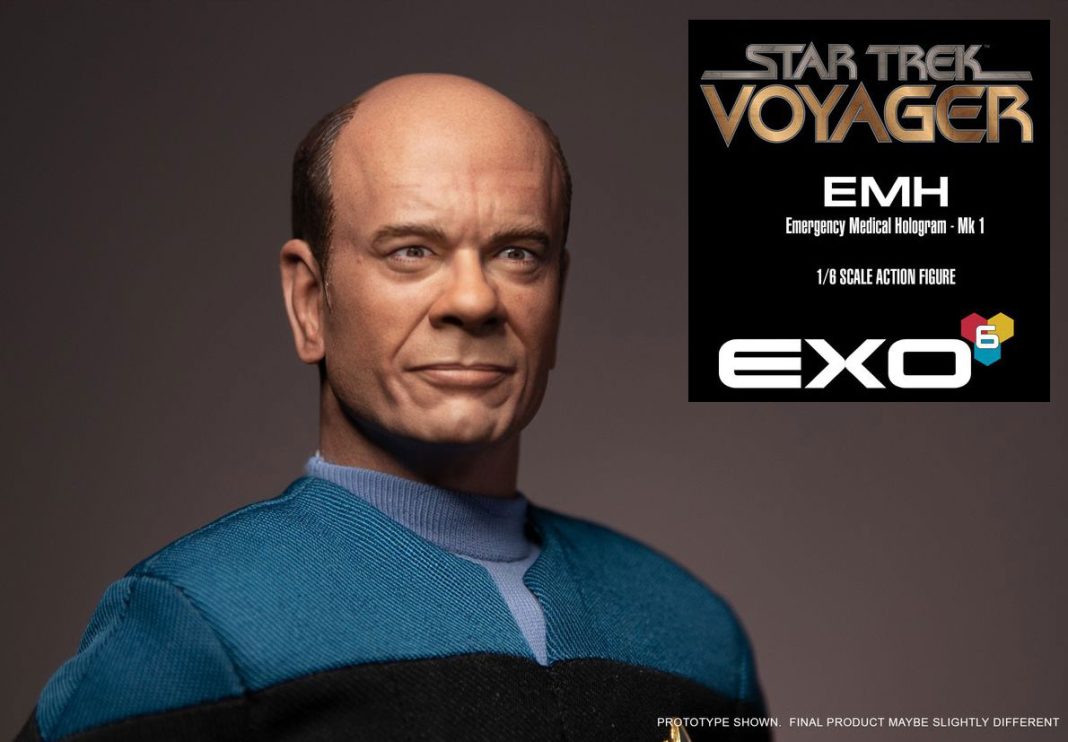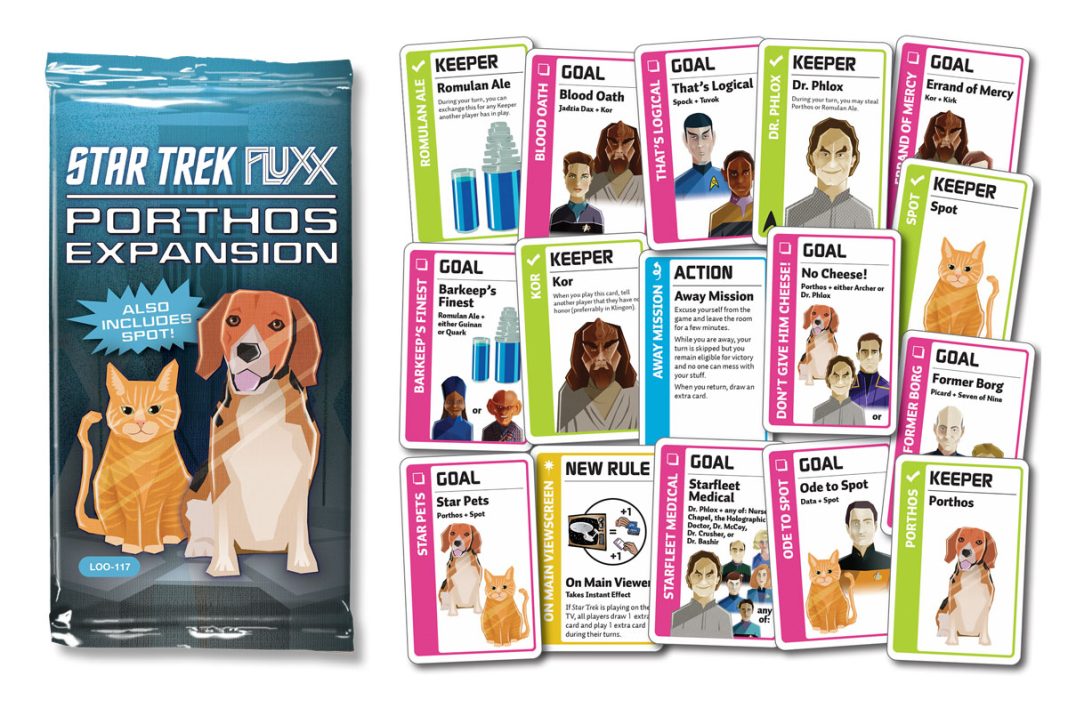Soundtrack fans celebrated last week, as for the first time, there would be no wait on the arrival of Star Trek: Prodigy’s score: music from the new animated series hit streaming services on October 29, with the expectation of more on the way.
The first female composer to ever write music for a Star Trek production, Prodigy composer Nami Melumad is a long-time Star Trek fan who began her musical association with the franchise scoring 2019’s “Q & A”.
Our team got a chance to speak with the composer as her score for “Lost and Found” hit the web last week.
TREKCORE: Before we talk about your work on Prodigy — you’ve mentioned in your love of Star Trek before; how would you describe yourself as a fan?
NAMI MELUMAD: I mean, I would say I’m a Trekkie… I have a hard time not buying merch and stuff! [Laughs] I have a little Enterprise right here in front of me. My friends make fun of me because every conversation we have somehow — somehow! — becomes about Star Trek. We could be having like a three-hour dinner or something, and at some point I’ll make it all about Star Trek. It’s been very present in my life.
TREKCORE: So you’ve seen it all, then? Do you have a favorite series?
MELUMAD: Yeah, I can rank them if you want! [Laughs] I would say Voyager, then DS9 and TNG, then the Original Series. After that, Discovery or Lower Decks, I’m not sure — they’re competing for me, but I really love Lower Decks. Then Picard — I know that’s low, but I’m more of an older-Trek person.
And Enterprise… I’m not sure where that goes. I do love it, though; I love the theme song.
TREKCORE: With such a wide knowledge of the shows, who are some of your favorite characters?
MELUMAD: I love Jadzia Dax, she’s my absolute favorite; Janeway, of course, she’s not my number-one but, I mean, she’s a given.
But the Doctor and Seven from Voyager, they both had such a great thing learning about how to be human, that exploration throughout the seasons and their experimentation with that. Same with Data, too, and Hugh — and Spock, too! I love Spock. I should have mentioned him!
I was always fascinated with that. Those journeys are the most interesting to me because it’s such a different perspective on humanity; it’s a way we don’t always see or perceive ourselves. That actually ties to Prodigy, because that’s what we’re doing — we’re looking at humanity and Starfleet and the Federation through the eyes of aliens, these kids.
They don’t know what Star Trek is about, you know, and we’ll see their journey into it.
TREKCORE: Thinking about those elements, how do you take those things you’ve described and turn it into music for Star Trek: Prodigy?
MELUMAD: Well, the first stuff you hear early on isn’t going to sound very much like Star Trek — but throughout the season, we’ll get closer to the classical Trek sound, as the kids learn more about things. Some of the musical motifs are staying with the characters from the beginning, and some will develop as the story and characters evolve.
You’ll see what I mean, I don’t want to spoil it! But I feel like using character motifs are a more cohesive way to approach any score — not just for Star Trek. In animation, where there’s so much more room for music, it really drives the story forward and you can use them in a better way than in something like a 90-minute movie.
TREKCORE: With somewhat of a large cast of characters, how to you make each motif distinct for each one?
MELUMAD: Sometimes there’s an instrument that goes along with each one, to make them more identifiable. For Gwyn, for example, she has this keyboarding, kind of a bell tone sound for her. Jankom gets a trombone, more of a brassy kind of element in his motif.
For Zero, who is a nonbinary character — not male or female — I chose the piccolo, which I think can represent that, especially when you play it at a lower octave and not the super high notes; it creates kind of a natural, neutral feeling. It’s a very curious kind of theme.
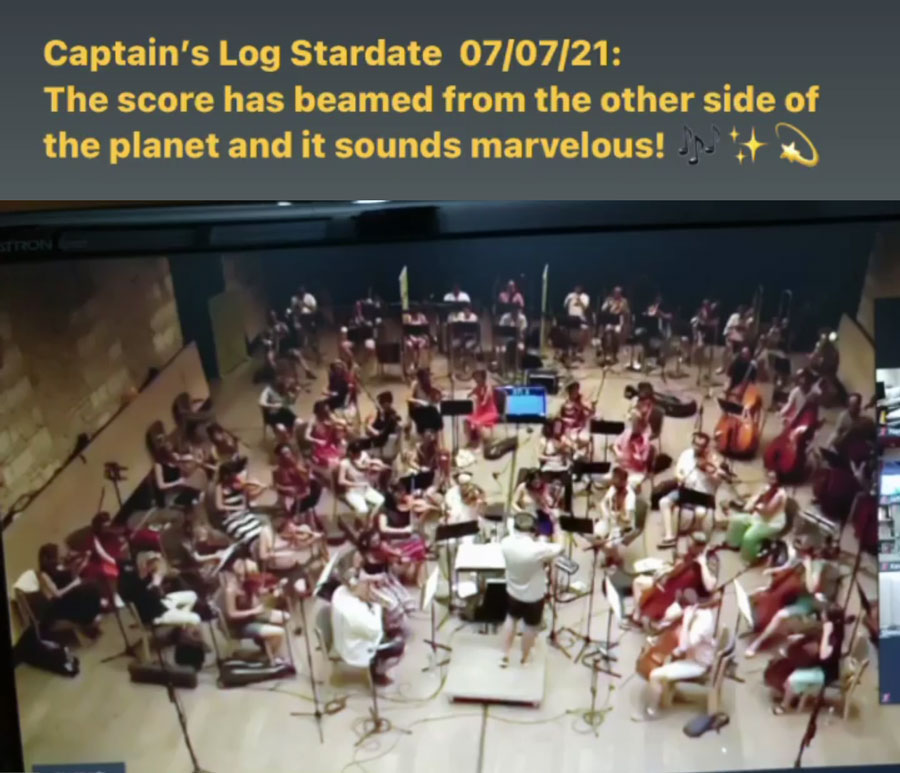
TREKCORE: I really don’t think that’s ever really been done for Trek composition before!
MELUMAD: There’s the Klingon theme and the pon farr theme, but mainly any of that recurring stuff came in the movies — but for the shows, yeah, I don’t know why nobody has done this before!
TREKCORE: Speaking of things no one has ever done, it’s amazing that you’re the first woman to score music for Star Trek — for any of the productions — which is just staggering after all these decades. How does that feel?
MELUMAD: Well, I’m proud to walk boldly where no woman has gone before. I know that Star Trek has always been a diverse show, in front of the camera, but nowadays it’s shifting behind the scenes as well, into production and editing roles – and now composing too.
It took a while, and I’m very grateful that it’s happening. I have a lot of great composers to derive inspiration from, all the previous composers and the guys doing the new shows — Jeff Russo and Chris Westlake — it’s all really great material. I do hope to see more women doing this job, more female composers, both for Star Trek and in general.
But I have to say, though, this was not like a “Let’s hire a female composer!” thing. It was mainly about, “Let’s hire the right person for the gig.” I feel like a lot of women are so ready; we have to work harder to get ahead, right? They’re ready, just give them the opportunity and they’ll do it.
TREKCORE: Are there more specific challenges to composing for animation as compared to live-action?
MELUMAD: It’s very different, actually, oh my God it’s different. [Laughs] There’s much more nuance that you want to capture in your score, because there’s no real human on screen — it’s all animated characters, so you have to help bring out their liveliness.
You do that with sound, and you do it with voice acting — and you do it with music. It’s the music’s role to drive the story forward, which is a much bigger job on animation, especially when there’s no dialogue and it’s just an action sequence or whatever. You have a lot of room to do that — and also I have great showrunners in Dan and Kevin Hageman, and our director Ben Hibon. They’re so open to musical ideas, and they acknowledge the role of music in a show like this.
But it’s challenging, because it’s a lot of music; it’s basically non-stop, 22 minutes of score for every episode. And there are a lot of very quick shifts, so your musical statements have to be quick when things are changing, even within a single scene. It’s all about navigating that nuance, shaping the scene to hit the accented points — what’s the key of this scene, where’s the change in tone, that sort of thing.
TREKCORE: When it comes to changes in tone like that, how to you approach an action sequence compared to a quieter scene, as you are composing the sore?
MELUMAD: There’s this thing with dialogue that it’s always considered the queen — if a scene has no dialogue, then the music can go wild — but if it has to play under dialogue, you don’t want to distract or take away from that. The challenge would be to write something can go underneath that doesn’t take away from that dialogue, but still provides the support that scene requires, while also being colorful and rich — and one that will work as a standalone piece.
For me, a lot of the music out there sometimes doesn’t work well as a standalone composition, but I really want people to be able to listen to this music later and go, “Oh, this is from Star Trek: Prodigy,” you know? I think using those themes and character motifs really helps to achieve what I’m talking about.
With action scenes, again, you can go wild; a lot of times I’ll use variations of one of our themes – like the Protostar theme or one of the character motifs, or the main theme song from the show that Michael Giacchino brilliantly composed.
TREKCORE: Outside of the Star Trek world, were there any other composers you looked to for inspiration on for the Prodigy project?
MELUMAD: When I first started reading the episode screenplays, Kevin and Dan sent me a playlist of what they were listening to when they came up with the show’s concept and when they were writing.
There was some Hans Zimmer, some Joe Trapanese — that was actually very inspiring, because in this show there are big moments, but there are very intimate moments too, and it’s all about finding the balance, the right type of score for every scene.
It wasn’t like, “We want a Jerry Goldsmith score!” or anything like that — I don’t actually think there was any Goldsmith on the playlist — but Michael’s score from his Star Trek films was in there, some James Horner as well.
TREKCORE: It’s exciting that your Prodigy score is being released online already for streaming — does that mean you’re done for the season at this point?
MELUMAD: Not yet, actually — I can’t say much, but I can tell you we’re still recording for the episodes.
TREKCORE: You’ve mentioned that the Star Trek: Voyager theme isn’t something you are able to use in your work for the show…
MELUMAD: Yeah, we have not licensed that music or anything like that, but there are musical nods to remind the older Trekkies like me of that score. There are certain chords, harmonies, textures, and orchestration stuff to bring back that feeling, and I think a lot of fans would really enjoy that.
That said, this show is for younger audiences who aren’t familiar with any of the past Star Trek shows, or those scores, so for them that nostalgic thing doesn’t really apply. Our goal is that they will be drawn into Star Trek, and that they will start watching Voyager after this — so when you take that into consideration, you need to create something new for audiences now.
It’s all about achieving that balance. Kids don’t need the Voyager theme to fall in love with Janeway, they’ll all in love with her anyway!
TREKCORE: But you are pulling from the classic Alexander Courage theme, clearly.
MELUMAD: Oh, for sure. I am quoting Michael’s Prodigy theme too, but there are definitely callbacks to the Courage theme — it was very much a mutual effort, pushing to be able to do that. It’s only used in very limited way; I feel like you only want to use that when it’s earned, when it will be very impactful for the audience to hear it.
Plus, it needs to be when our characters have gotten to a certain spot in their journey where it feels like it should be there, tying the Prodigy story to the rest of the Star Trek universe.
This interview has been condensed and edited for clarity.

Nami Melumad’s score for Star Trek: Prodigy is streaming now on Spotify, Apple Music, and from most other digital music services.
Star Trek: Prodigy returns this Thursday on Paramount+ in the United States, Australia, Latin America, and the Nordics, as well as on CTV Sci Fi Channel in Canada.
![]()

